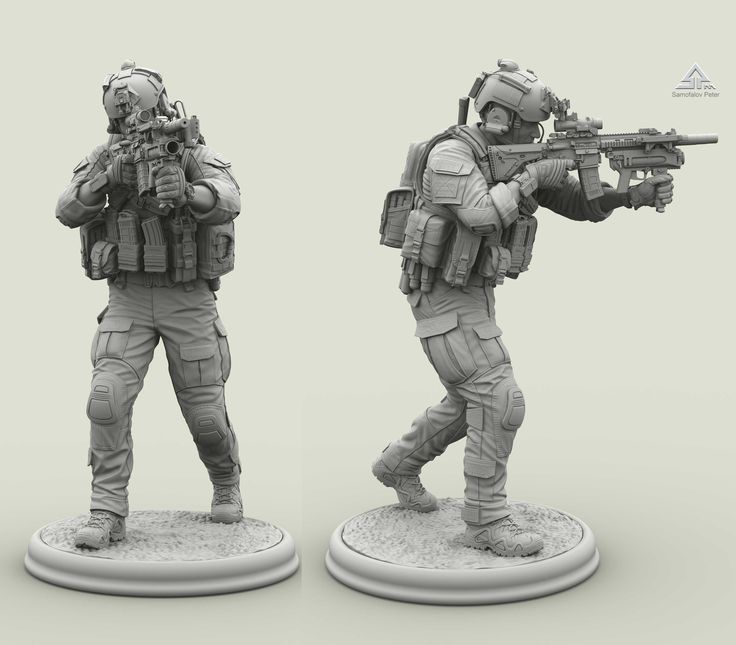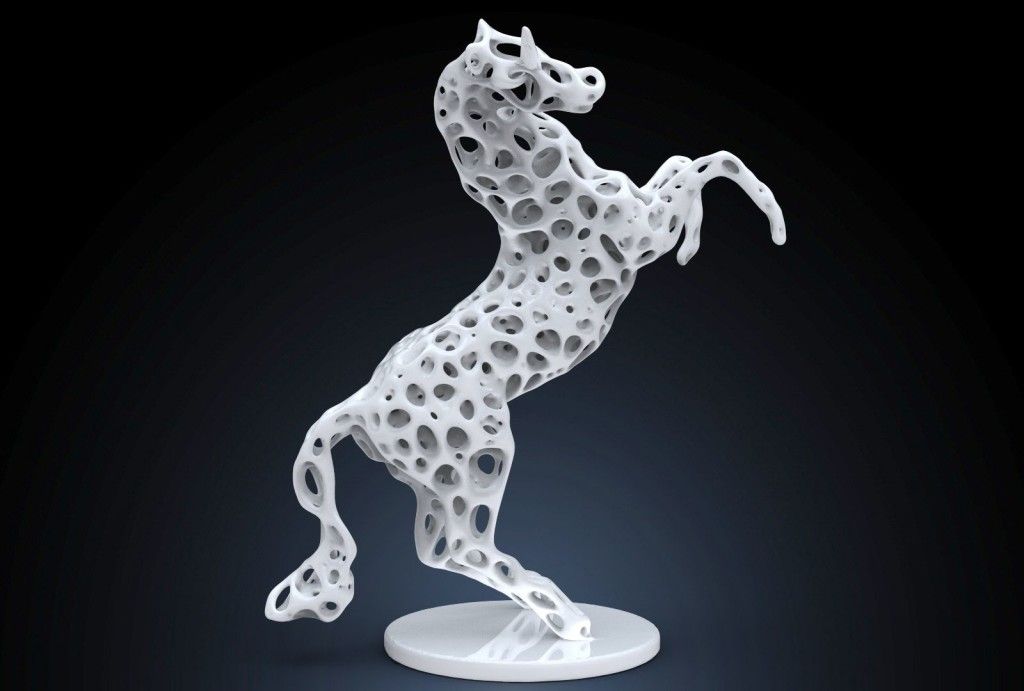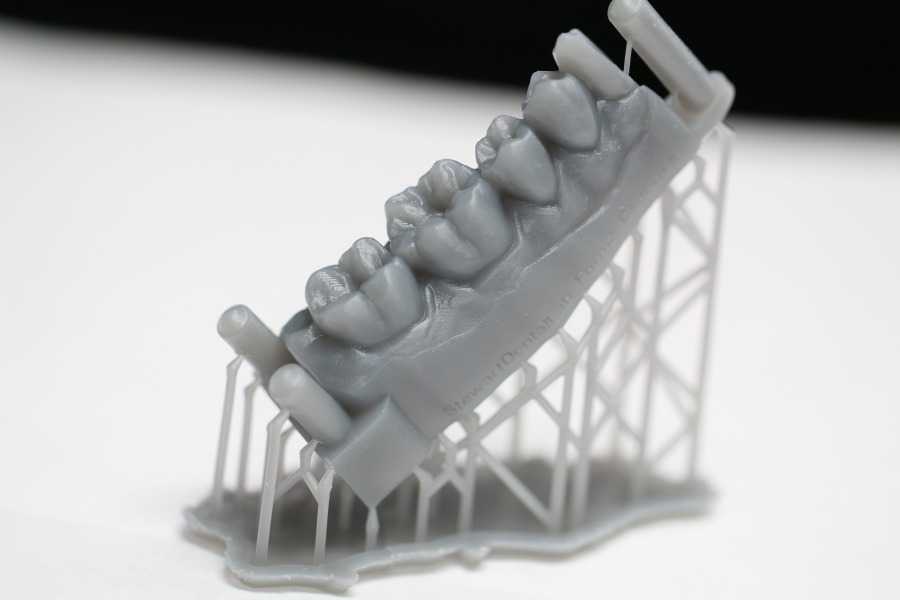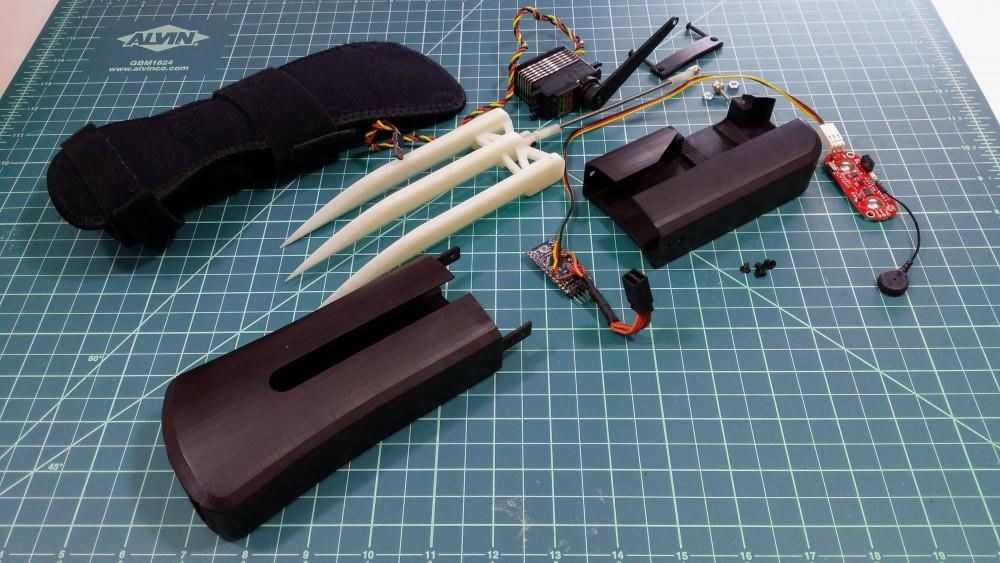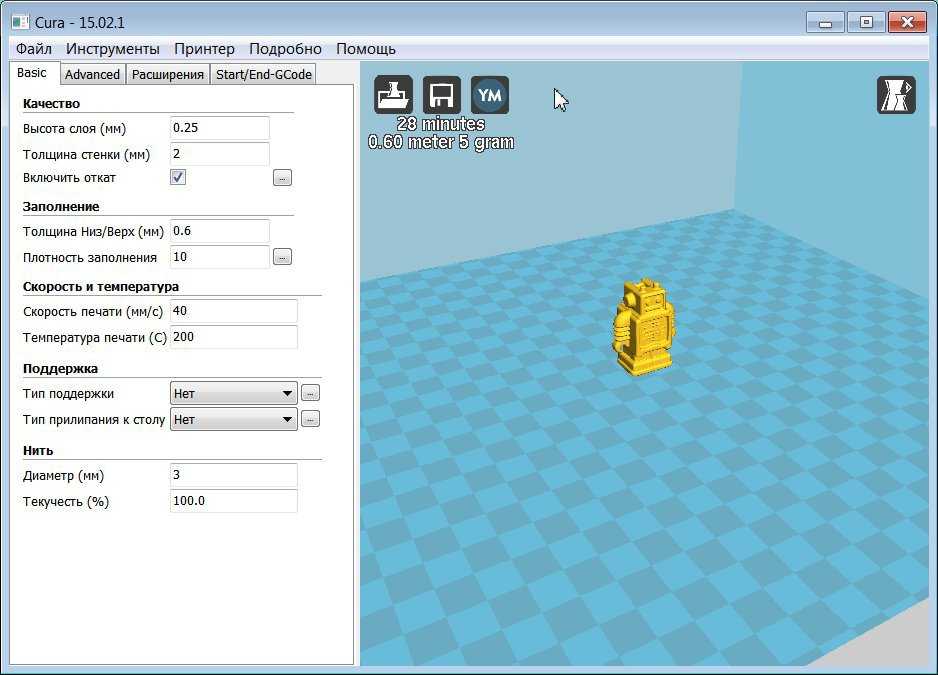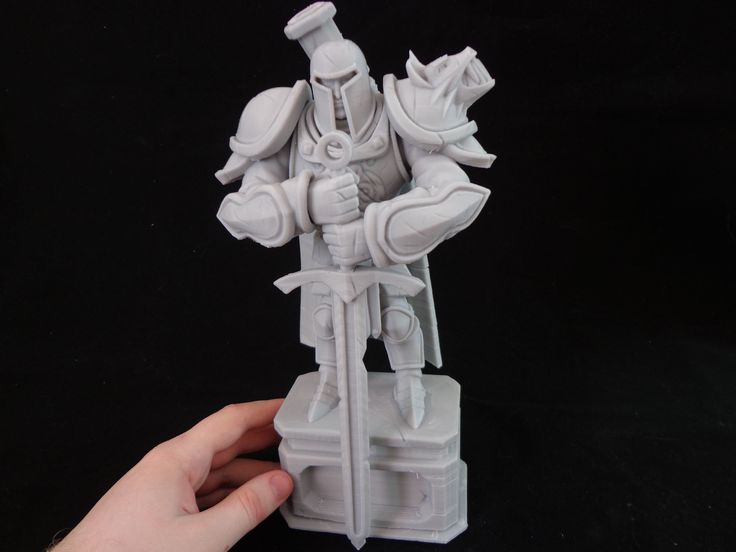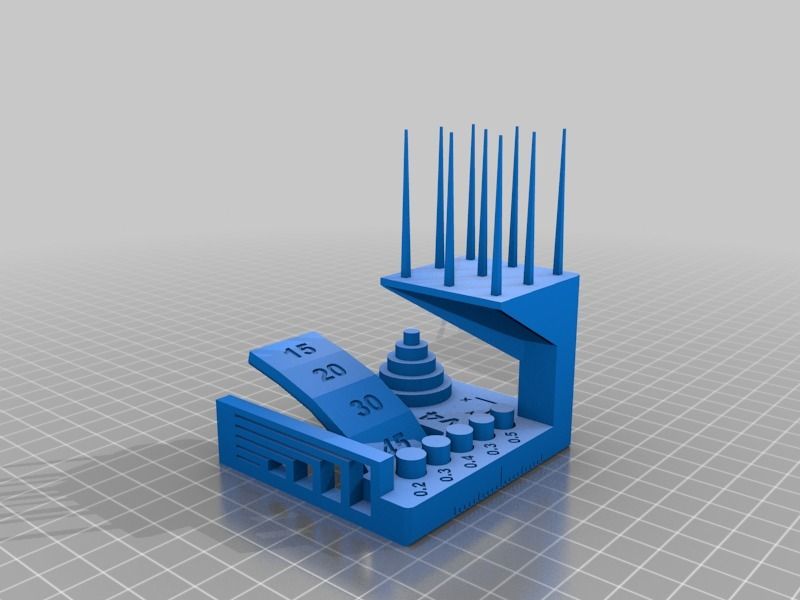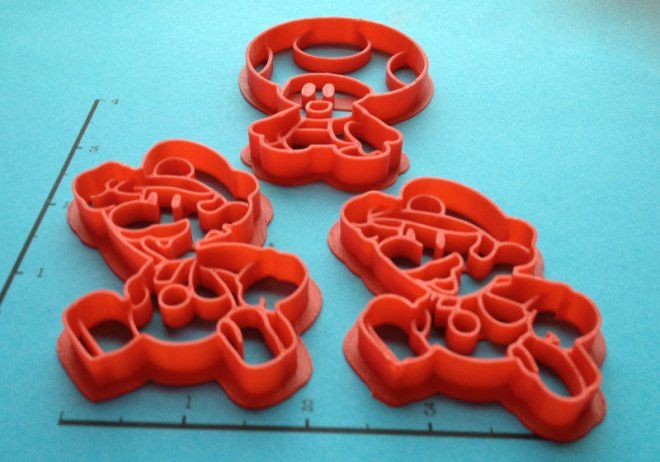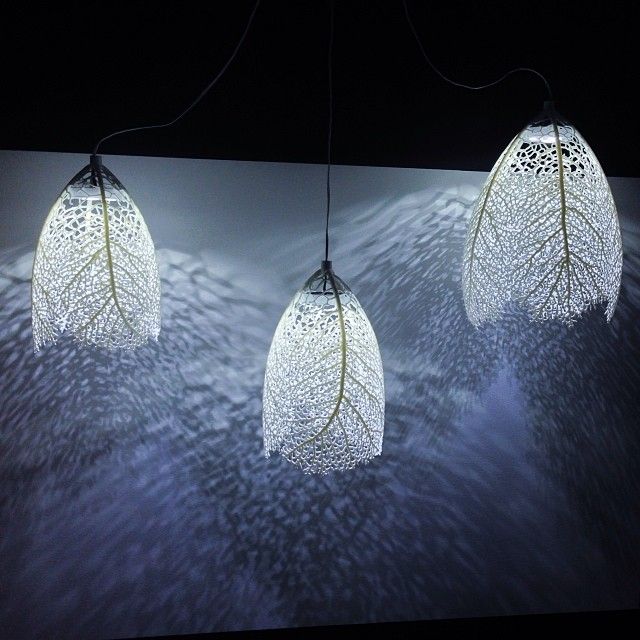Military 3d printing
The Military Turns to 3D Printing
The military is always looking for ways to stay ahead of the curve, and incorporating 3D printing into the defense sector is one way in which they are doing just that. 3D printing is being used by military units from different countries all over the world. They are creating everything from replacement parts for critical vehicles, ships, and aircraft as well as new designs for safety equipment being worn by service members to prototypes for new defense weapons, medical supplies, and even runways and bunkers.
3D printing technology is revolutionizing the way militaries around the world procure and maintain their equipment. In the future, 3D printing will become even more prevalent in the military, with the technology being used to print everything from weapons and ammunition to food and medical supplies.
One of the biggest advantages of 3D printing is that it allows for on-demand manufacturing, which means that militaries can print the items they need when they need them. This could be particularly useful in combat situations when time is of the essence and traditional supply chains are disrupted.
The use of 3D printing in the military enables them to be more self-sufficient. With 3D printers, militaries can print replacement parts and components for their equipment, rather than having to rely on outside suppliers. This could be a critical capability in wartime, when enemy forces may try to cut off supply lines.
3D Printing Spare Parts for the Military
Photo courtesy of UltimakerOne area where the military is using 3D printing is to create replacement parts for land vehicles, ships, and aircraft. In the past, if something needed a new part, it would have to be ordered from a manufacturer and then shipped to the military base or flown in for a vessel deployed at sea.
This could take weeks or even months, especially with the current supply chain issues plaguing the entire world and keeping important parts stuck in ports due to chip shortages and pandemic-created backlogs.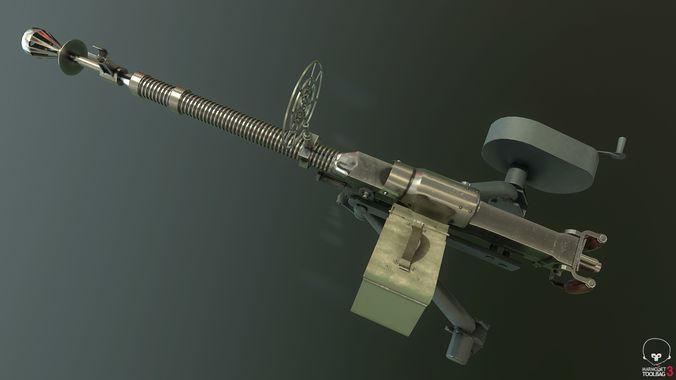
With 3D printing, the military can create the parts they need on-site whether that is on base, at the front lines, or at sea. In a matter of hours or days, they can be up and running again which can be critical in a warzone or where lives are in danger.
Thanks to 3D printing technology, vehicles, and other legacy machinery can be kept out of retirement much longer when a spare part is able to be 3D printed to put it back into service.
Instead of spending thousands of dollars to have a single custom part made, they are able to design and 3D print it in tough materials and even metal to save millions of dollars a year.
Creating Tools and Jigs
Photo Courtesy of the UltimakerThe various branches of the military have all discovered the benefit of 3D printing when it comes to creating tools and jigs to repair current equipment or install new parts.
Whether that is a 3D printed multitool they can clip to their belts or jigs that can help guide them to attach helicopter blades more safely, the possibilities are endless for the Department of Defense when it comes to 3D printed tools.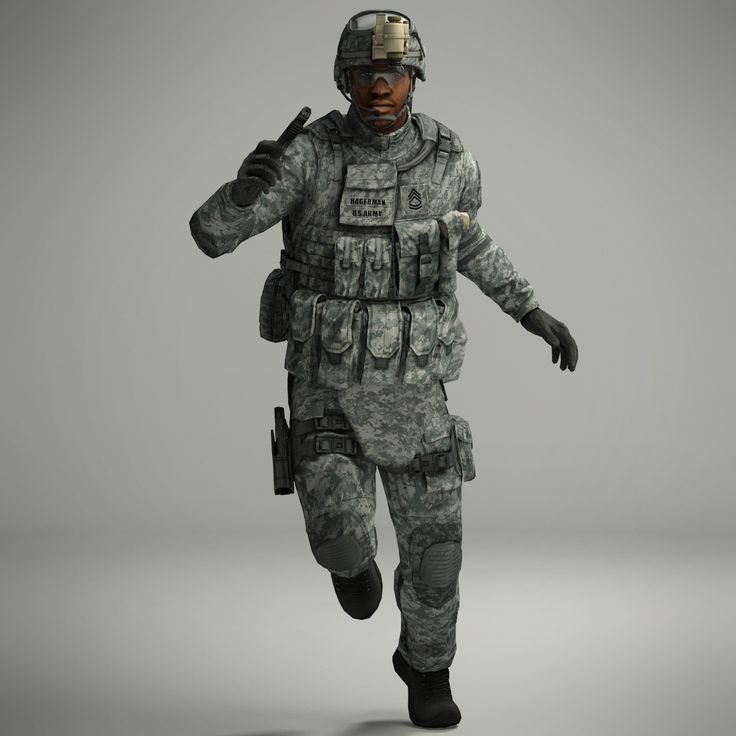
The military has always been on the cutting edge of technology, and 3D printing is no exception. The ability to quickly and easily create complex tools on the fly in a matter of hours is a huge asset in any field, but especially on the battlefield where time is often of the essence and sometimes lives are at stake.
Using 3D Printing to Improve Strength and Durability of Equipment
Photo courtesy of Ultimaker3D printing technology is being used by the military to create prototypes and design new equipment. This technology benefits the military because it allows for the faster creation of prototypes and quicker turnaround times for design changes. Additionally, 3D printing can be used to create customized parts and pieces that fit the specific needs of the equipment and improves workflow.
Photo courtesy of UltimakerSometimes it is as simple as designing housings for existing equipment to help protect it from damage in combat or during heavy use. For example, in the image above, a strong 3D-printed enclosure was designed to protect an antenna from being snapped off near the base during heavy use and driving through thick brush.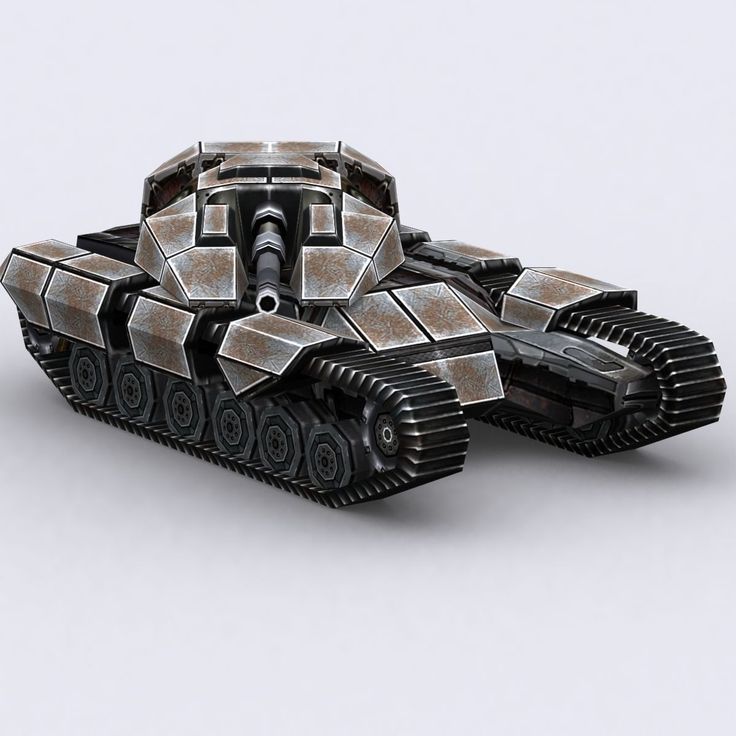
There are countless ways in which the Military is using 3D printing to improve the workflow of their service members as well as protect the gear they already have while also ensuring a longer life for those pieces of equipment as they are being used on a daily basis.
3D Printed Medical Devices and Supplies for the Military
Photo courtesy of UltimakerAnother area where the military is using 3D printing is to create medical supplies. This is especially important in combat situations, where time is of the essence. 3D-printed medical supplies can be produced quickly and easily in the field, which means soldiers can be treated faster and have a higher chance of survival in combat situations.
From custom-made Epi-Pen carrying cases and stethoscopes to I.V. line control, tracheal tubes, splints, casts, covid swabs, face shields, earplugs and so much more – the department of defense units around the globe are finding hundreds of ways to create medical devices with 3D printing technology.
3D Printed Military Bunkers, Bridges, and Runways
Photo Courtesy of the US ArmyThe military has partnered with companies like ICON to start building 3D-printed barracks to house service members for training missions. They have also been using 3D printing to create bunkers, vehicle hide structures, bridges and buildings in various locations around the world to serve to support and house military personnel and machinery at bases as well as in the field.
These large structures are being created using giant robotic 3D printers that extrude concrete. Once the military use has ended, the buildings, bridges and structures can then be left behind after a natural disaster or wartime mission for local communities to use once the mission is complete.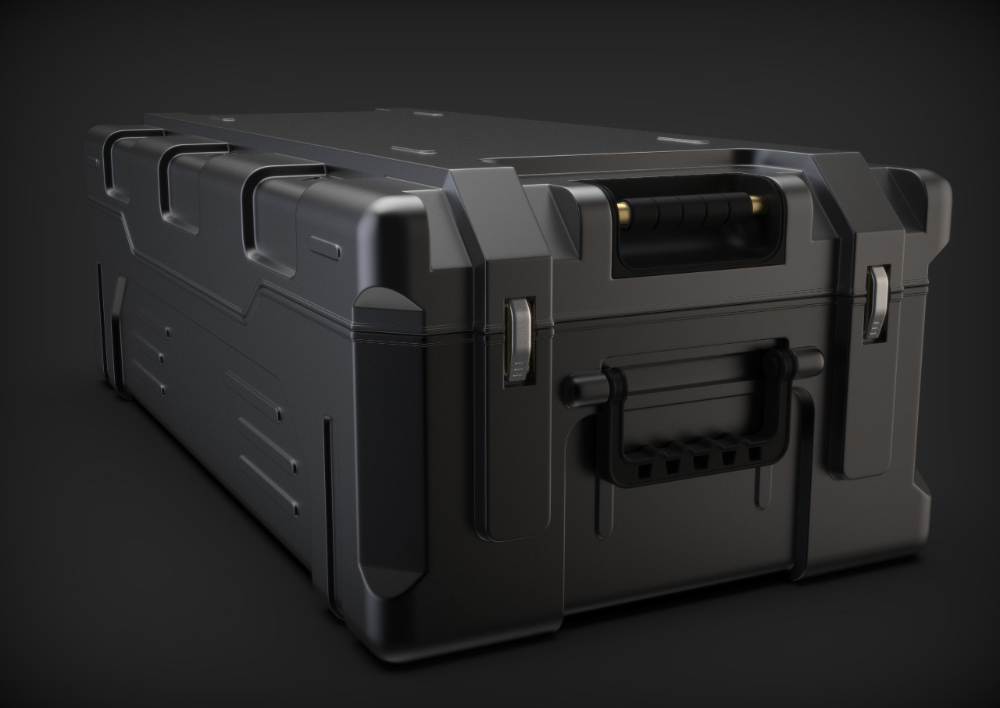
3D printed runway panels are also being created for use in areas where the runways are unstable and too dangerous for military personnel to land safely or where there is no runway at all and military aircraft need to land in order to complete their missions or bring in supplies to ground troops.
Using 3D Printing to Make Propellers, Vehicle Hulls and More
Photo Courtesy of Naval GroupFrench company Naval Group has 3D printed a propeller which is composed of five 200 kg blades. The propeller was eventually fitted to the Andromeda, a mine-hunting ship. By using 3D printing technology they have drastically reduced the construction time and minimized the number of materials used to create this component and saved thousands of dollars in the process.
Photo courtesy of the US ArmyThe Applied Science & Technology Research Organization, (also known as ASTRO America), has been been working on the Jointless Hull Project with the US Army to develop and deliver a hull for combat vehicles.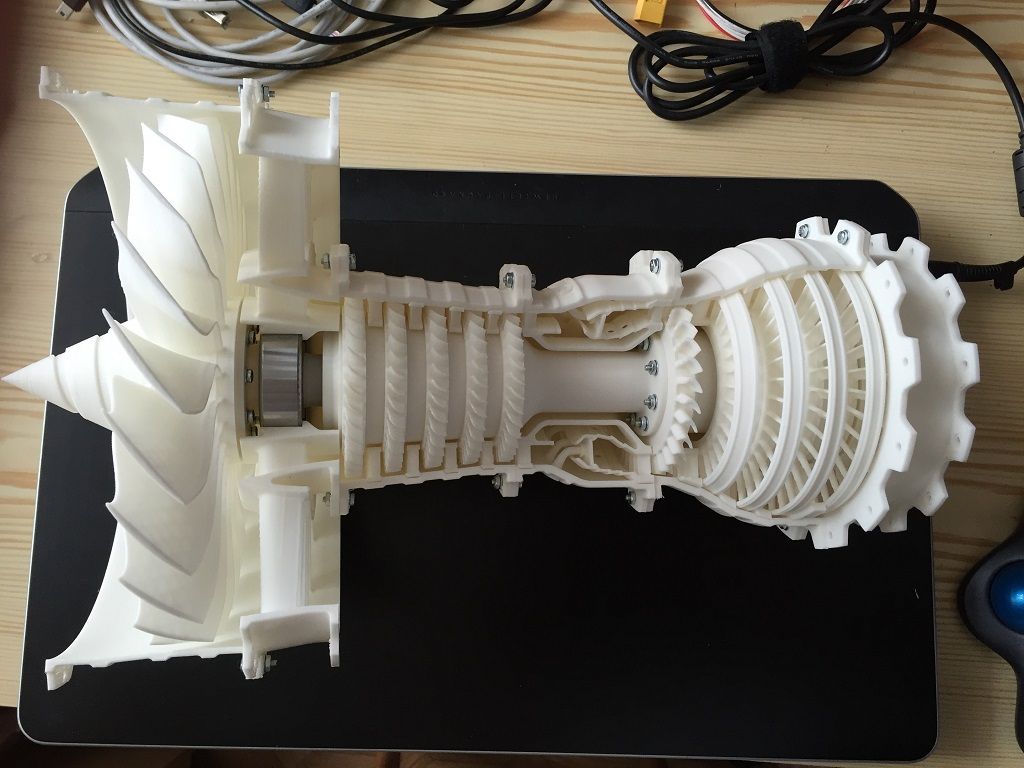 Their hope is that this project will help to reduce manufacturing time and lower production costs. This will also reduce the weight of the vehicle and increase its performance and survivability for the service members who are manning them.
Their hope is that this project will help to reduce manufacturing time and lower production costs. This will also reduce the weight of the vehicle and increase its performance and survivability for the service members who are manning them.
There are countless ways in which the military is currently working to make lighter weight and safer machinery, equipment and vehicles for use in combat as well as daily operations. 3D printing is also allowing for designs that can be repaired quickly and easily, on the spot without need to rely on outside manufacturers and supply chain issues.
Prototyping Safety Equipment with 3D Printing
Photo courtesy of the US ArmyFor the military, 3D printing is also opening up a whole new world of possibilities in areas where they are constantly looking to improve functionality, safety, and comfort for their service members.
For example, General Lattice and the U.S. Army have paired up to improve the impact absorption of the Army’s combat helmet through 3D printing by incorporating advanced lattice geometries. The hope is to improve soldier protection in the field and a higher chance of survival after suffering a head impact. The 3D printed materials will be tested in real-world situations to help improve the design and ultimately begin implementing its use in the field.
The hope is to improve soldier protection in the field and a higher chance of survival after suffering a head impact. The 3D printed materials will be tested in real-world situations to help improve the design and ultimately begin implementing its use in the field.
Whether they are reworking designs for face shields, masks, and other pieces of safety gear, now more than ever, the ability to 3D print a prototype and make adjustments in a matter of minutes is crucial.
The Future of 3D Printing in the Military
Photo courtesy of UltimakerIn the future, 3D printing technology will become even more sophisticated and widespread, and it will have a transformative impact on the way militaries operate.
3D printing technology is revolutionizing the military industry by providing a way to quickly and cheaply produce spare parts, prototypes, and even entire weapons systems. The technology is still in its early stages, but the potential applications for 3D printing in the military are vast and could change the way wars are fought and natural disasters are responded to in the future.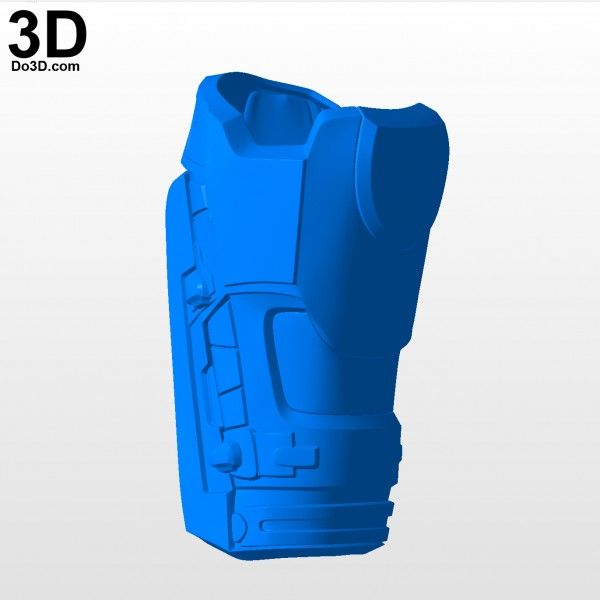
For more information on 3D printers that military branches are utilizing, please visit our shop at shop3duniverse.com.
How the US Military uses 3D Printing Technologies
Learn Blog
How are different branches of the US military using additive manufacturing? Here are some past and present additive manufacturing projects across the US Army, Air Force, Navy, and Marines:
Legacy Parts, On Demand
What happens when aging military equipment and vehicles need parts that are obsolete? This is an ongoing issue faced by all six branches, and a lot of time and effort is being put into finding ways to solve the problem.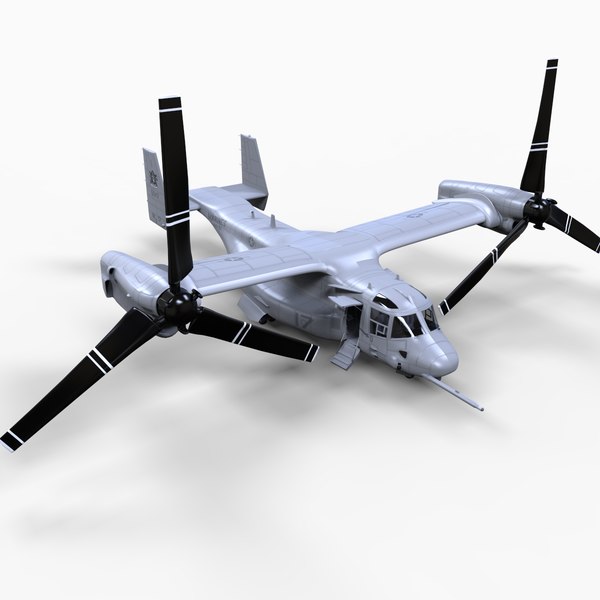
- In 2020, the U.S. Army needed more hatch plugs: devices mounted on combat vehicles to help soldiers see during low-light missions. The original vendor had discontinued the part, and the replacements would require a three-month lead time and cost $10K to produce. The Army used additive manufacturing to solve the problem. In a few short days, they 3D printed two versions of the part using different materials at a fraction of the cost.
- The Airforce Lifecycle Management Center regularly uses 3D printing to manufacture obsolete parts for a number of legacy fighter jets including fleets of B-52s, the massive C-5M Super Galaxy, and the B-2 Stealth Bomber.
- The Army Materiel Command (AMCOM) began working with a team from Wichita State University in late 2020 to dismantle and scan every part of a Black Hawk helicopter for 3D printing. Other branches in AMCOM are undertaking a similar task and assessing 48K ground vehicle parts and 98K communications and electronics parts for 3D printing.
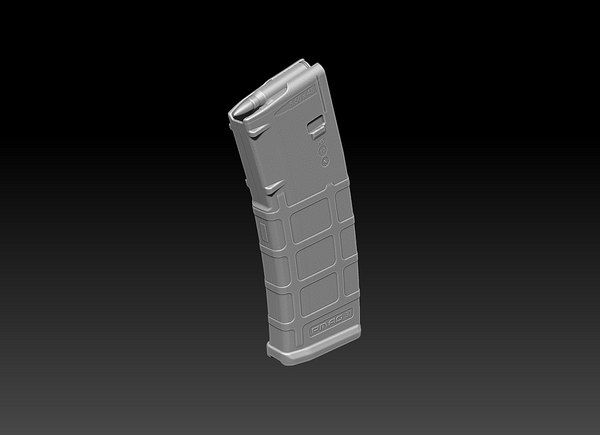
U.S. Army Case Study
Read our newest customer success story about a major training base for the U.S. Army.
Less (Weight) is More
It’s not unusual for a single soldier to carry between 90 to 140 lbs worth of gear, including weapons, ammo, water, MREs, batteries, and personal protective equipment. That’s a lot to manage, especially in a high-stress situation. And soldiers aren’t the only ones burdened by additional weight. Increased weight in transport vehicles, planes, and ships can decrease fuel efficiency and reduce maneuverability and speed. As a result, the military has a lot of interest in developing ways to lower weight without sacrificing performance.
- The Army Research Laboratory is currently working on making a variety of new, lightweight vehicle parts — brackets, propulsion systems, weapons, and turret components — with additive manufacturing.
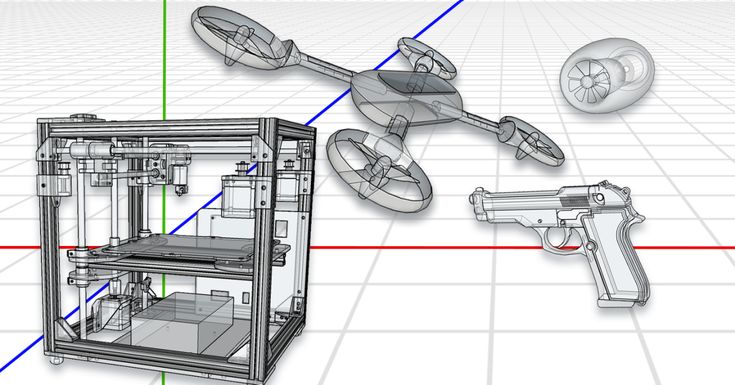 They are investigating lightweight metals such as titanium, titanium alloys, and hybrid ceramic tile composites for their Next-Gen Combat Vehicles (NGVC) program.
They are investigating lightweight metals such as titanium, titanium alloys, and hybrid ceramic tile composites for their Next-Gen Combat Vehicles (NGVC) program.
- Earlier this year, the Army Research Laboratory partnered with a team at the University of Central Florida to improve the additive manufacturing of a high-strength magnesium alloy by increasing the density enough to make 24 micro-lattice structures. The material has the potential to produce lightweight mission components typically carried and used by soldiers in the field.
- After a few years of successfully using AM to replace obsolete parts in legacy aircraft, the Air Force has now turned its focus towards rolling out flightworthy hardware for in-use military engines, aircraft, and support equipment. The Air Force is particularly interested in the increased durability and decreased weight of 3D printing with AM materials. After all, less weight means more speed and lower overall fuel costs.
Bigger, Better, Faster
The military has a longstanding interest in using AM technology to quickly create very large, durable parts.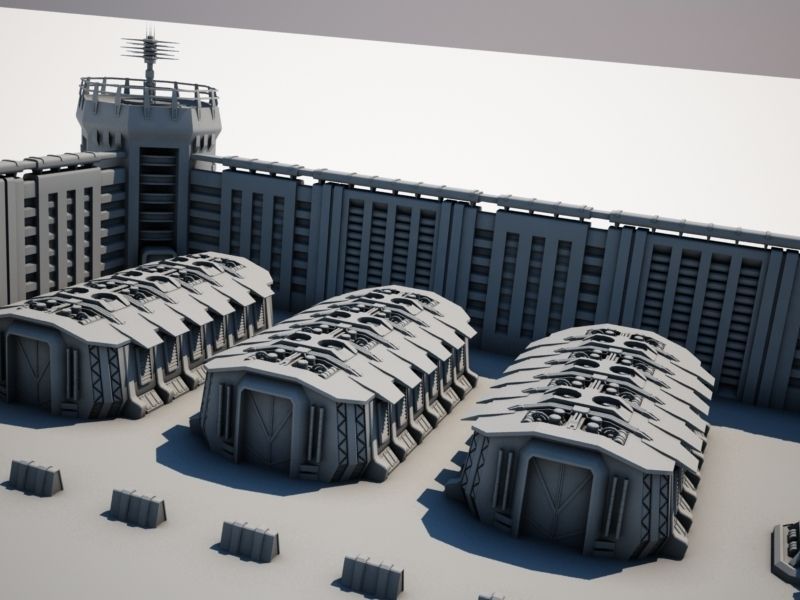 The need for bigger items is always greater in the field where vehicle replacement and maintenance or short-term shelters definitely come in handy.
The need for bigger items is always greater in the field where vehicle replacement and maintenance or short-term shelters definitely come in handy.
- Earlier this year, the U.S. DEVCOM Army Ground Vehicle Systems Center (GVSC) launched its Jointless Hull project. As part of this project, the GVSC is developing the largest 3D metal printer in the world to manufacture single-piece hulls and other large parts for military ground vehicles. When complete, the massive 3D printer is expected to print metal items up to 30’ L x 20’ W x 12’ H. There is also a smaller version of the printer in the works for development work to support the larger machine.
- In late 2019 — and in under 36 hours — members of the U.S. Marines at Camp Pendleton used quick-drying concrete to 3D print a bunker large enough to hide a truck-mounted multiple rocket launcher system.
- Not to be outdone by the Marines, this year the U.S. Army Corps of Engineers developed a deployable 3D printer that can quickly create shrapnel-resistant concrete structures like buildings, small bridges, bunkers, and gatehouses.
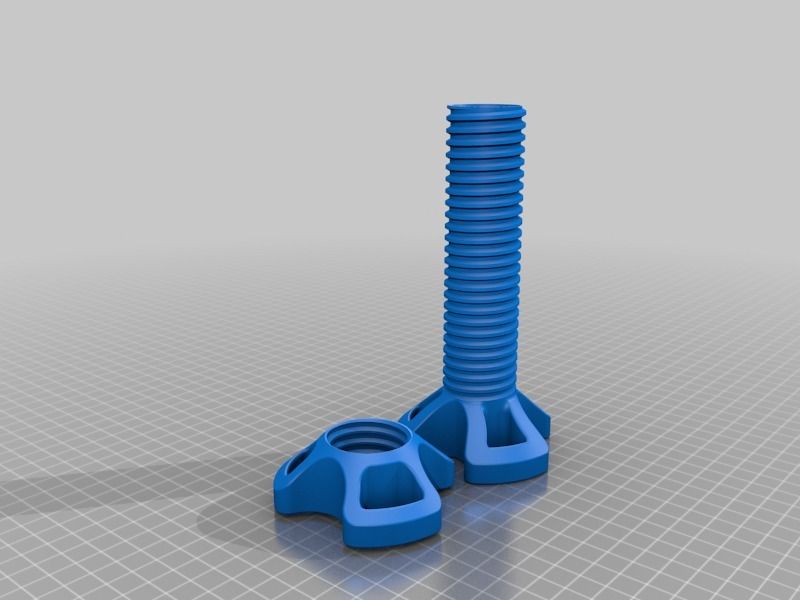
Printing in the Field
In an effort to move from form to function, all branches of the U.S. military are exploring more efficient and effective ways to 3D print anywhere in the field whether on board a ship at sea or at a remote base camp.
- The U.S. Navy and Naval Sea Systems Command (NAVSEA) are exploring ways to use AM to design, print, approve, and install critical or obsolete parts while at sea. This will allow crews to 3D print parts and tools on-demand to reduce part production costs and repair time. A recent example can be seen aboard the USS Tulsa where Navy sailors now have access to 3D printing technology and, thanks to training provided by the Robert C. Byrd Institute at Marshall University, they know how to use it.
 The crew members were taught how to set up, operate, and maintain 3D printers. They were also taught computer-aided design techniques and how to use precision scanning equipment. Once at sea, they will have the opportunity to practice their new skills on the ship by 3D printing various components.
The crew members were taught how to set up, operate, and maintain 3D printers. They were also taught computer-aided design techniques and how to use precision scanning equipment. Once at sea, they will have the opportunity to practice their new skills on the ship by 3D printing various components.
- Meanwhile, across the pond in France, the Marine Nationale (French Navy) launched the largest 3D printed metal propeller installed on an in-service military ship in January of this year.
- Researchers at the Army Research Laboratory (ARL) have taken recycled polyethylene terephthalate (PET) from leftover bottles and plastics and used it as a material in a fused filament fabrication (FFF filament). Eventually, the plan is to let U.S. forces 3D print replacement parts on demand while in the field using discarded battlefield plastic waste like water bottles, milk jugs, and more.
* For more about the Air Force and its use of additive manufacturing, take a look at one of our earlier blog posts, Additive Manufacturing with Composites in Aerospace and Defense.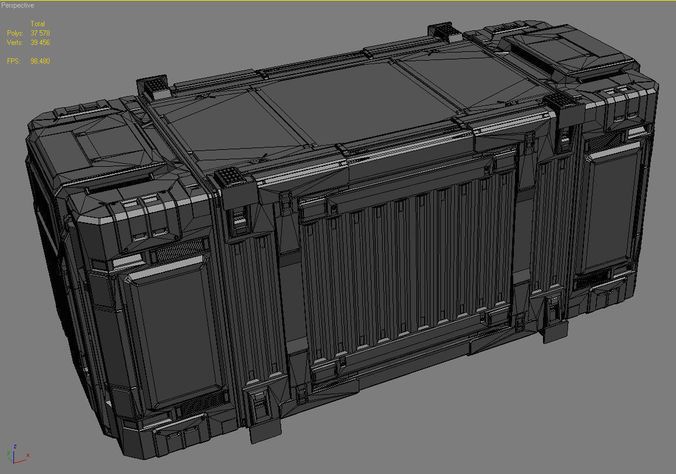
All of the blogs and the information contained within those blogs are copyright by Markforged, Inc. and may not be copied, modified, or adopted in any way without our written permission. Our blogs may contain our service marks or trademarks, as well as of those our affiliates. Your use of our blogs does not constitute any right or license for you to use our service marks or trademarks without our prior permission. Markforged Information provided in our blogs should not be considered professional advice. We are under no obligation to update or revise blogs based on new information, subsequent events, or otherwise.
Never miss an article
Subscribe to get new Markforged content in your inbox
required required requiredSubmit
Overview: 3D printers in military service
The military industry has always been at the forefront of progress: many inventions either began their life path as military or dual-use products, or, in the very first years after their appearance, were involved in this area. In this age of digital technology, this fate has not escaped 3D printing.
In this age of digital technology, this fate has not escaped 3D printing.
3D printers are actively used by military contractors and direct employees of all branches of the military.
In this article, we will talk about the use of 3D printing in the military-industrial complex around the world: from providing military equipment with spare parts, to operational printing of drones and buildings anywhere in the world. nine0003
Tables
- In Russia
- in the world
- - Aviation
- - Fleet
- - Military Weapons
- - Construction
- - Construction
- - Self -Probrition - Self -Probrition - Self -Production - Self -Production
- Conclusion
In Russia
JSC "Federal Research and Production Center "Titan-Barrikada", which develops missile systems and military vehicles, bought and uses in prototyping a kit based on the 3D printer XJRP SPS450B.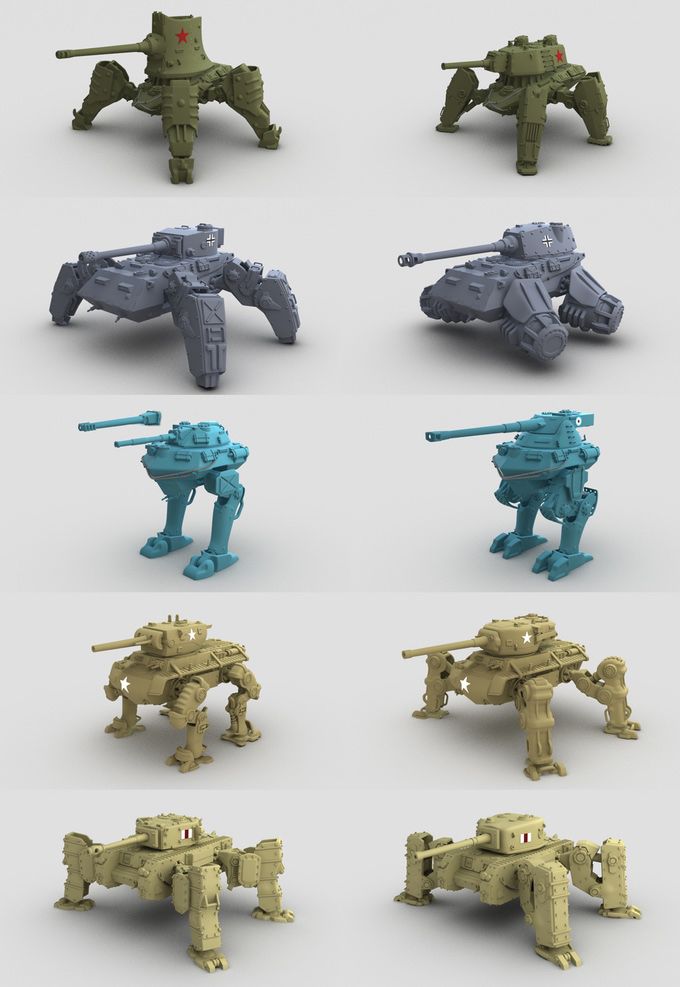 The kit consists of two devices: directly a 3D printer with a large print area, working on SLA technology, and a polymer curing chamber. nine0003
The kit consists of two devices: directly a 3D printer with a large print area, working on SLA technology, and a polymer curing chamber. nine0003
XJRP SPS450B 3D Prototyping Kit.
Source: pechat3d.ru
The 3D printer is planned to be used to create miniatures of future parts, cases or mechanism assemblies. The first product made on this 3D printer was a prototype wheel with a tread.
Ilyushin specialists plan to produce some simple parts for the Il-112V military transport aircraft using 3D printing.
Il-112V transport aircraft model. nine0044
Source: © ITAR-TASS
Together with specialists from the Voronezh Aircraft Plant (VASO), PJSC 'Il' specialists use 3D-printed parts as test samples, which will be replaced with originals made by the classical method before departure . But in the future, it is planned to master the printing of simple components that will be installed on mass-produced aircraft.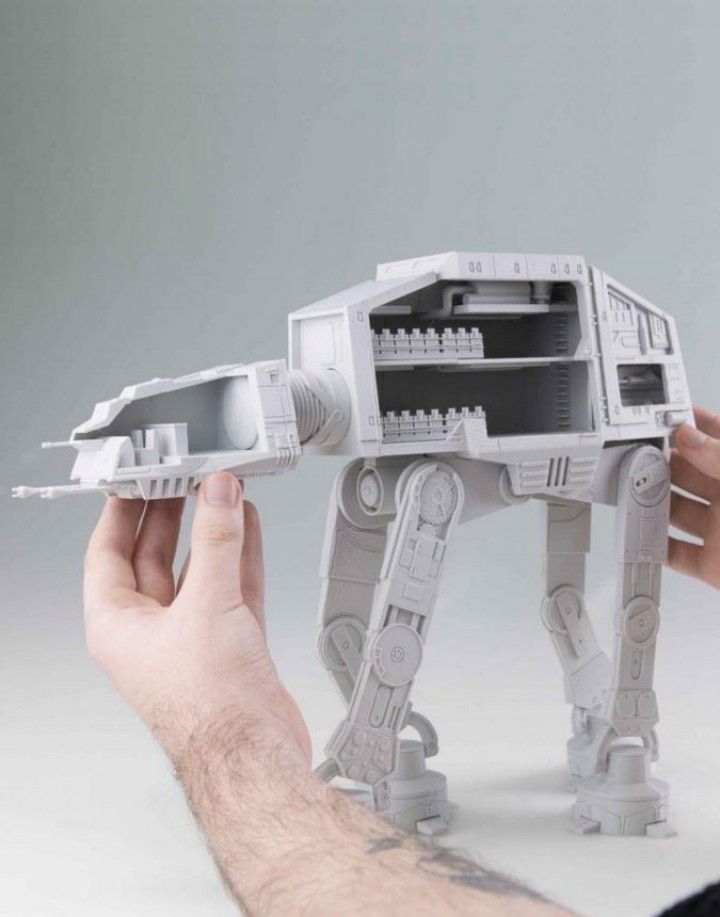
Pavel Chernikov, First Deputy Director General of PJSC Il, said: “The IL-112V is being created from scratch, and many parts and components need to be improved during installation on the aircraft. We started using a 3D printer to see how right or wrong our calculations were. Such technologies make it possible not to interrupt the finalization of finished products, which, in turn, significantly reduces the installation time of equipment and reduces the cost of the production process.” nine0003
Research and Production Corporation 'Uralvagonzavod' named after F.E. Dzerzhinsky JSC has purchased an S-Max 3D printer manufactured by ExOne.
Source: 3dtoday.ru
This printer is designed for making sand molds. Molds are used for casting metal blanks. As the deputy chief metallurgist of NPK Uralvagonzavod said: 'We will no longer have to manufacture expensive foundry equipment for experimental, new products and complex castings of small series.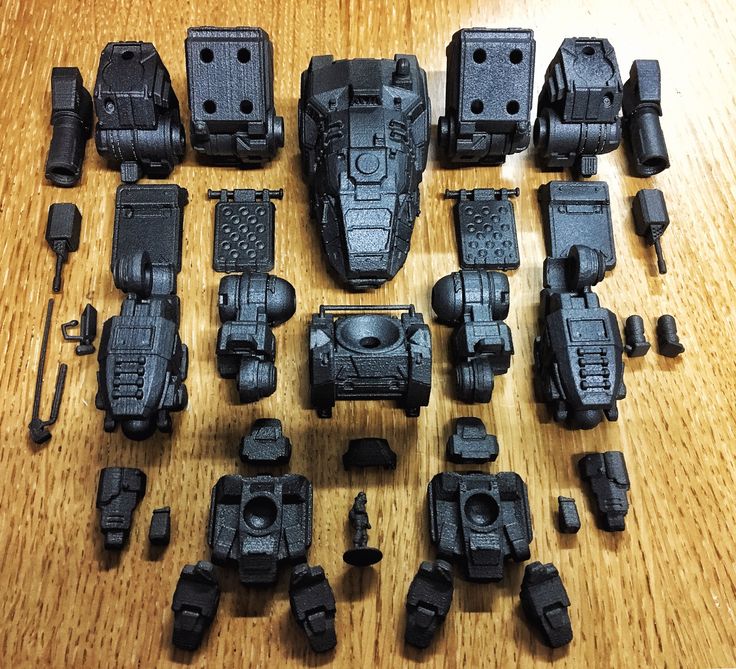 It will be enough for the designer to develop a 3D model of the required casting, according to which, also in 3D, the mold will be designed and manufactured. Finished rods will go to the foundry. In addition, to solve the problems of the corporation, they can be transported to any distance.' nine0003
It will be enough for the designer to develop a 3D model of the required casting, according to which, also in 3D, the mold will be designed and manufactured. Finished rods will go to the foundry. In addition, to solve the problems of the corporation, they can be transported to any distance.' nine0003
Source: 3dtoday.ru
This is not the first professional 3D printing system used by Uralvagonzavod. In 2015, the company purchased a Fortus 400mc 3D printer manufactured by Stratasys Corporation. This printer is used in the production of parts for the T-14 "Armata" tank and other vehicles manufactured by Uralvagonzavod.
T-14 tank ('Object 148') on the 'Armata' platform.
Source: OAO 'NPK 'Uralvagonzavod'
Representatives of the enterprise note that the introduction of 3D printing saves time and production resources. It is not required to spend forces on turning metal samples.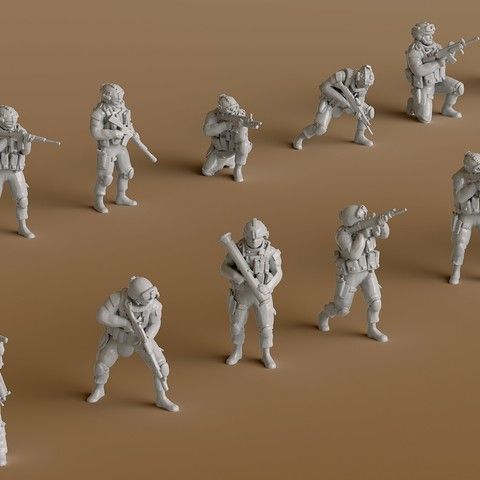 If a part doesn't fit, it's easier to reprint it than remake it.
If a part doesn't fit, it's easier to reprint it than remake it.
Russian Helicopters Holding, according to its CEO Andrey Boginsky, plans to 3D print about a hundred parts for rotorcraft by 2020.
Andrey Boginsky.
Source: © Yuri Smityuk/TASS
In 2018-2019, it is planned to carry out a series of bench tests in order to obtain all the necessary certificates for printed parts by mid-2020. In total, it is planned to test about a hundred parts and assemblies.
Compared to traditional parts, 3D-printed parts are lighter and their production will be deployed at the Kazan Helicopter Plant. As a result of the use of parts obtained by 3D printing, the holding plans to reduce the cost of products. nine0003
Worldwide
The road to military 3D printing is not paved with roses. When we hear about cool 3D printed military projects, we have to consider some of the challenges that come with doing them.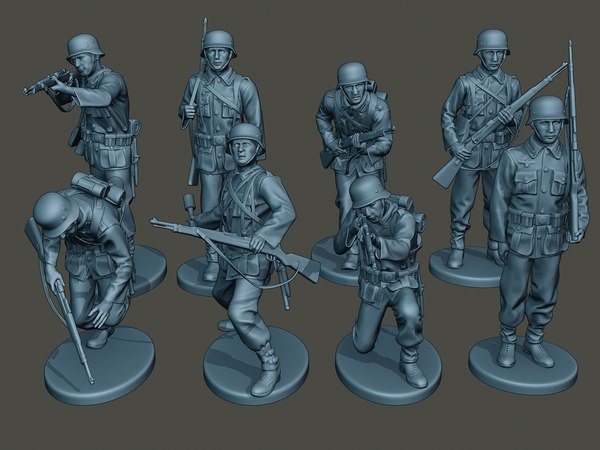
Soldiers get to know FORTUS.
Source: all3dp.com
Quality certification problem. Many things that the army is supposed to produce using 3D printing are designed for harsh operating conditions, they are subject to high requirements for compliance with dimensions, geometry and quality, and an unsuccessfully printed part can lead not only to monetary losses, but also to the death of soldiers . This issue will most likely be resolved by certification of the 3D printers themselves. nine0003
Insufficient printing speed for the army. Even the most expensive 3D printer is not fast enough. There are also issues of privacy/security, copyright, and many other little things that are not obvious at first glance.
While these issues are being addressed, the US Department of the Navy decided to host a 3D printing hackathon. 12 organizations were invited to participate, which showed their developments in the field of 3D printing for the Navy.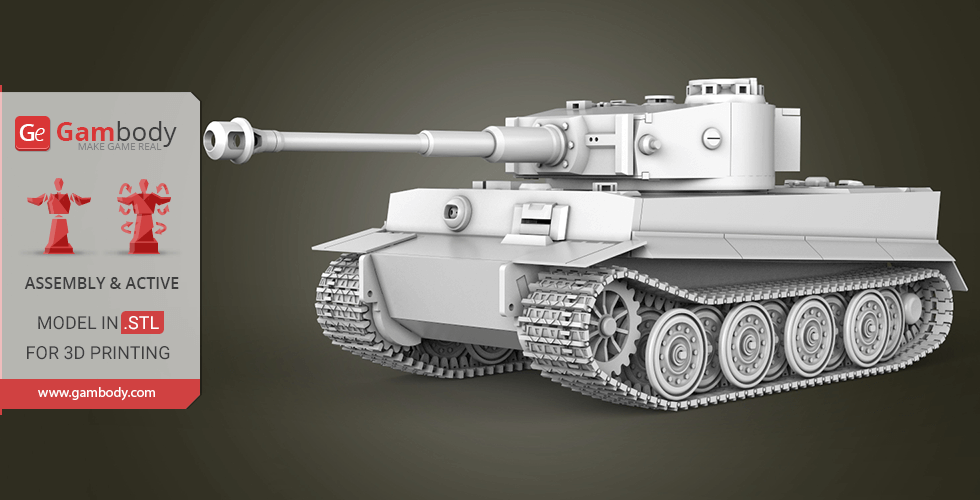 According to the participants, fully or partially printed inventions: “Allow to improve the ability to maintain combat readiness.” nine0003
According to the participants, fully or partially printed inventions: “Allow to improve the ability to maintain combat readiness.” nine0003
One of the new and memorable developments was the four-legged transporter robot (MeRlin). It turned out to be quite compact and can run, jump and walk up and down stairs. Three-dimensional printing made it possible to create, right in the supporting frame of the robot, a hydraulic manifold that serves to transfer energy to the robot drives. Those interested in robotics will find Merlin similar to the transport robots of Boston Dynamics.
Robot device “Merlin”.
Source: all3dp.com
Aviation
A 3D-printed drone was launched from one of the British Royal Navy ships at sea, HMS Mersey. The device was created in collaboration with the University of Southampton.
EOS 3D printed drone launch.
Source: all3dp. com
com
The case is made of nylon, using laser sintering technology. With a wingspan of one and a half meters, the drone weighs only three kilograms. The main task of this project was to create a small drone for exploring the surroundings, which can be quickly printed on board the ship. nine0003
The drone, named SULSA, was equipped with a small video camera. Management was carried out by researchers from Southampton using video cameras. The flight, with a range of 500 meters, lasted only a few minutes, but proved that 3D printed drones could be launched from the sea.
SULSA drone route during test flight.
Source: www.southampton.ac.uk
3D printing will solve the problem of limited ship capacity by allowing equipment to be printed at sea as needed.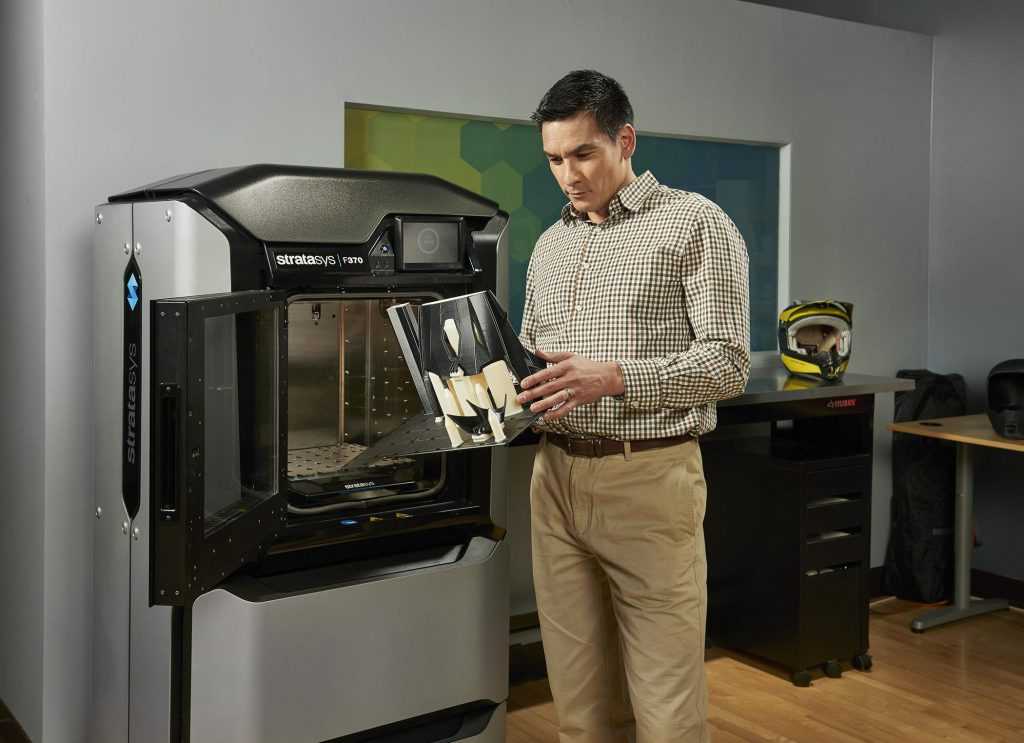 The only thing you need to have on board to print a drone is a 3D printer and a supply of nylon, which is disproportionately cheaper than a case made using traditional technologies, and takes up much less space. nine0003
The only thing you need to have on board to print a drone is a 3D printer and a supply of nylon, which is disproportionately cheaper than a case made using traditional technologies, and takes up much less space. nine0003
The only drawback is the print speed, but it is expected to improve in the near future. Engineers from the American Army Research Laboratory (ARL) are trying to fight this shortcoming. They are developing drones that can be made within a day. Engineers are building drones that can be used to assist soldiers in communication, delivery, and aerial surveillance.
Eric Sopero demonstrates his drone to US troops.
Source: all3dp.com
Drones are made using off-the-shelf motors and propellers, but their body is almost entirely 3D printed. The maximum speed of the drone is 55 miles per hour. Drones can either be controlled by the operator from the remote control or operate in a completely autonomous mode.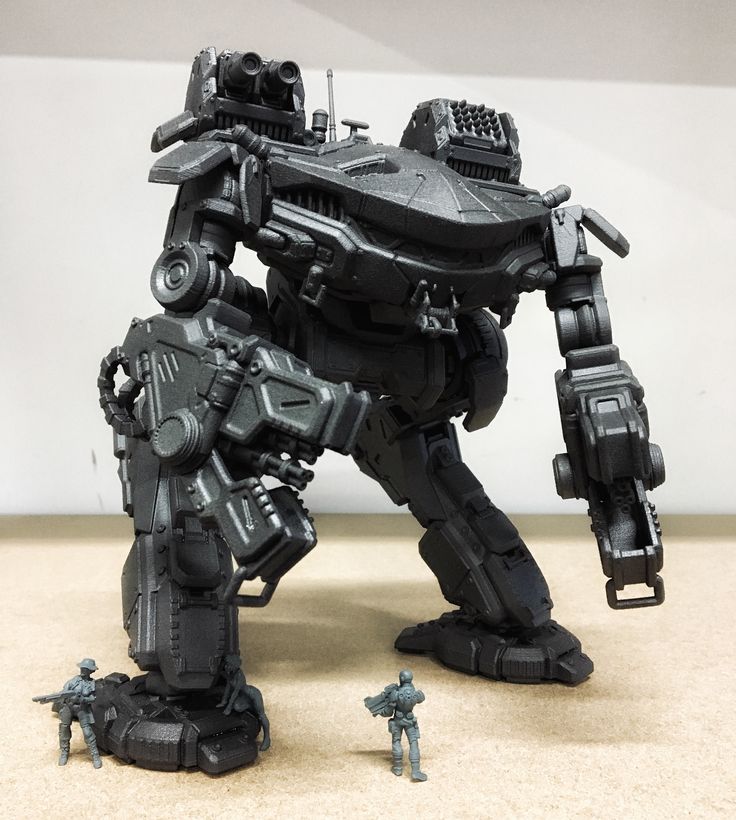 Work continues to reduce noise and increase flight range, maneuverability and payload.
Work continues to reduce noise and increase flight range, maneuverability and payload.
The US Army is partnering with the Marine Corps to develop an unmanned vehicle parts catalog that can be downloaded to an employee's tablet. The software of this catalog allows you to order or 3D print a product directly from it. nine0003
American soldier with a drone.
Source: all3dp.com
In addition to experiments with drones, 3D printing is also used in “big” aviation.
For example, the US Air Force has announced that it will 3D print the toilet seats of military transport aircraft. The announcement comes after a scandal erupted when it was reported that each toilet seat cost the Air Force $10,000 to replace.
Airplane seat for $10,000. nine0044
Source: all3dp.com
The public, which already believed that the government did not always save on military spending, was extremely outraged.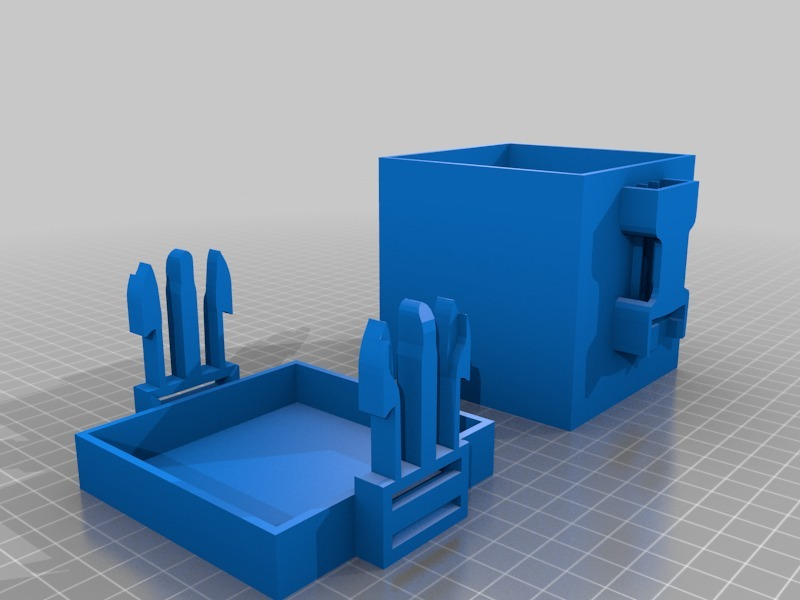 After an investigation initiated by one of the senators, the military department announced that it would print toilet seats on 3D printers.
After an investigation initiated by one of the senators, the military department announced that it would print toilet seats on 3D printers.
Why is the toilet lid so expensive? These covers were mass-produced by Lockheed Martin, and in 2001 this giant of the military industry stopped their production. In addition, the military department explained that the C-5 toilet seat is not only a cover, but also part of the lavatory wall, which is designed to protect the body of the aircraft from corrosion that can be caused by urine. nine0003
According to the manufacturer, its high cost is due to the need to suspend the production of other goods. In the case of independent production of the Air Force, the spare part will cost only $300.
The manufacturer now claims that the US Air Force does not own the copyright to this cap. It is not known how this lawsuit will end, but the Air Force says that they will no longer buy this spare part, because they can make it themselves much cheaper.
As stated in the department: “The use of 3D printing allows us to create parts that are no longer produced, which leads to a significant reduction in costs.”
C-5 transport aircraft.
Source: all3dp.com
Another example of 3D printing was demonstrated by the Maryland Marines. Using 3D modeling and 3D printing, they made a $70,000 F-35 fighter jet part for just 9 cents. The Marines were assisted by Sam Pratt, a mechanical engineer in the design office of the Carderock Additive Technology Factory. nine0003
Sam revealed that he was with a support platoon in South Korea teaching CLB-31 Marines how to design 3D models and how to use 3D printing. His main task was to test the performance of 3D printers on marine vessels. He also taught employees how to use Solidworks CAD.
Sam Pratt teaches Marines about 3D printing.
Source: all3dp.com
When there was a problem with printing a part needed to repair the F-35, a Marine officer offered to team up to cooperate.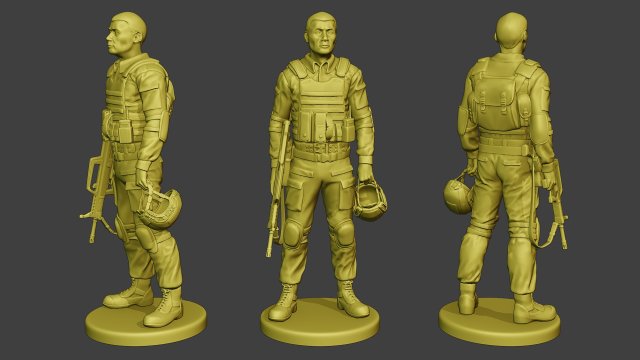 It turned out that the employees had already developed this part, but could not find the right dimensions. The fact is that they used a hobby-grade 3D printer and the free 3D editor Blender - Blender is ideal for implementing art projects, but it is difficult to create engineering products in it. nine0003
It turned out that the employees had already developed this part, but could not find the right dimensions. The fact is that they used a hobby-grade 3D printer and the free 3D editor Blender - Blender is ideal for implementing art projects, but it is difficult to create engineering products in it. nine0003
US Marine at the 3D printer.
Source: all3dp.com
Pratt helped solve modeling and printing problems, the part was printed in PET-G.
Currently there are about 90 parts for ground vehicles that are approved for 3D printing in the military, you can download one of these parts and print it.
Large manufacturers are also moving forward and mastering 3D printing technologies. Thus, the giant of the aviation and military industry Lockheed Martin is actively investing in 3D printing. nine0003
Lockheed Martin uses 3D printing in its manufacturing processes, with more than a hundred 3D printers in its arsenal for prototyping, tooling and printing finished products.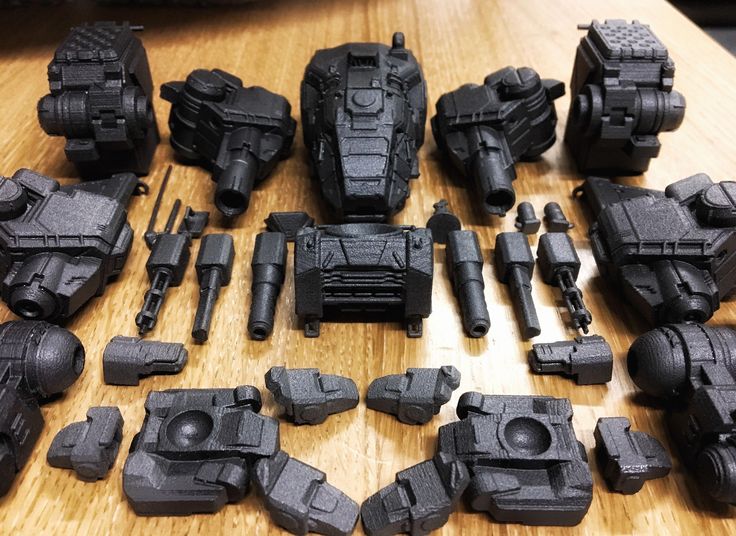
There are several reasons why Lockheed Martin uses 3D printing: up to 80% reduction in production time, up to 40% reduction in part weight, proven reliability of parts in difficult environments, and most importantly, the ability to further increase production in the near future.
For example, it takes 18 to 20 months to manufacture fuel tanks for spacecraft using traditional technologies. The production of such a tank by 3D printing takes two weeks. In this case, a better uniformity of the structure of the tank elements is achieved. The tanks are manufactured using a Sciaky printer using EBAM (Electron Beam Direct Manufacturing) technology, in which a bar of metal material is heated by an electron beam.
Source: all3dp.com
Lockheed Martin's 3D printed products have already passed the lab testing stage and are in active use. Some of them travel around our solar system: the Jupiter-exploring Juno satellite has eight 3D-printed brackets, and the Orion spacecraft uses printed high-pressure valves.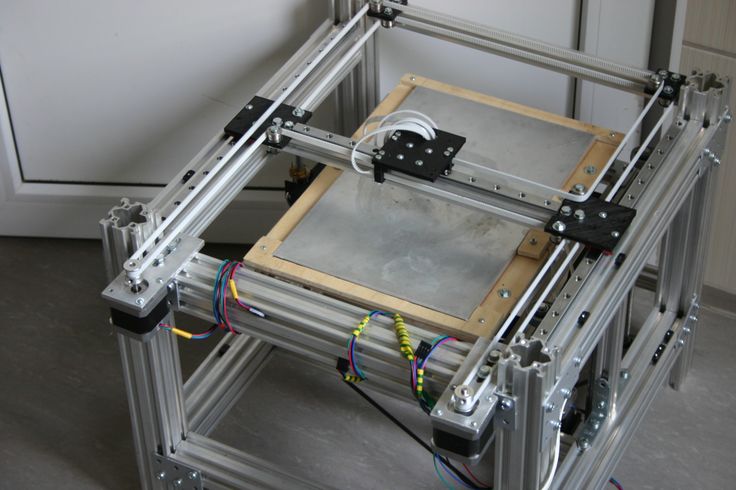
Fleet In South Korea, loudspeaker grilles for aircraft carriers are being 3D printed. Shipping these gratings from Europe took up to seven months and cost $612 each. The printed part is made in 4-5 hours and costs about $35. Printing parts reduces their cost and production time, and localization of production reduces dependence on foreign supplies, which may be delayed or become unavailable for various reasons. nine0003
General Electric has contracted with the US Navy to develop software for rapid 3D printing of spare parts for ships, aircraft and other critical military installations. The contract, worth nine billion dollars, is designed for four years and provides for the creation of technology "digital duplicates" - a complex of software, base models and hardware. This technology will be used both for those spare parts that are no longer manufactured, and for new parts of ships and aircraft. nine0003
Designed with a ConceptLaser 3D printer. Source: all3dp.com
Source: all3dp.com
The project is being implemented in two stages: at the first stage, software and hardware parts will be developed, at the second they will be combined into a complex capable of quickly creating the necessary products using laser metal melting technology (DMLM).
Ammunition and small arms
The US Army has designed and 3D printed a fully functional grenade launcher called “R.A.M.B.O”. The development of the grenade launcher took about six months. He shoots grenades also made using 3D printing. nine0003
R.A.M.B.O.
Source: all3dp.com
The grenade launcher consists of 50 parts, all of which, with the exception of springs and hardware, are printed on a 3D printer.
3D printed grenade launcher parts.
Source: all3dp.com
R.A.M.B.O. demonstrated characteristics similar to the M203 underbarrel grenade launcher made in the traditional way.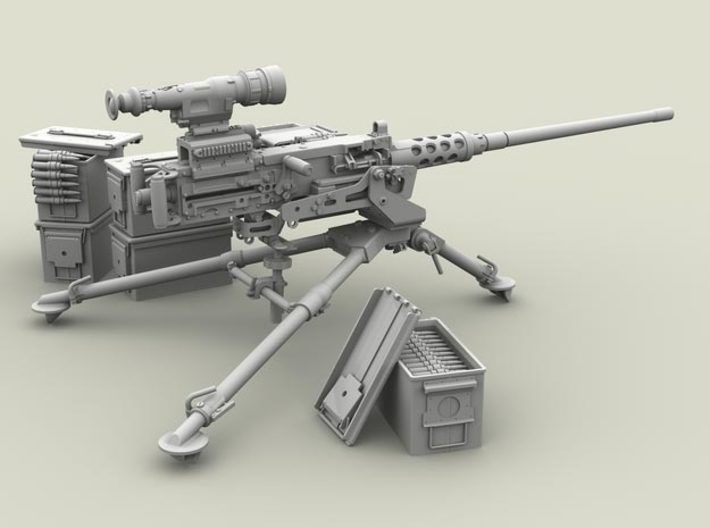 nine0003
nine0003
A US Marine team is 3D printing and testing small explosive containers that can be used on the battlefield.
3D printed container for explosives.
Source: all3dp.com
The development of small arms began with the private sector - with the most primitive samples of pistols. On the Internet, you can find drawings of products such as the sensational Liberator. The first 3D printed pistol was printed on a professional Stratasys Dimension SST printer. The gun is chambered for 9 caliber rounds.mm and is charged during assembly.
A pistol whose main components are made of plastic and printed using a 3D printer. Frame: YouTube
Source: YouTube
The very possibility of obtaining weapons using 3D printing so excited the public that the drawings of the “Liberator” were withdrawn from public access, and the United States introduced a ban on 3D-printed weapons.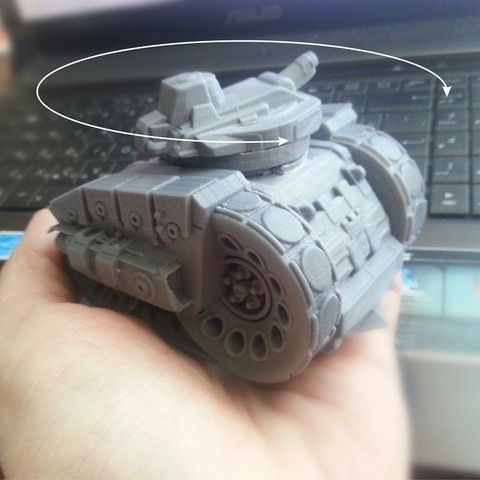
Solid Concepts created a replica of a .45 Browning M19 pistol using selective metal laser sintering11 - Solid Concepts 1911 DMLS. The first sample withstood 50 shots, later ones are capable of firing 600 shots without visible damage.
Solid Concepts 1911 DMLS.
Source: Solid Concepts Inc.
Recently, the ban on the distribution of 3D printed weapons was lifted by a court decision. So, it is now possible to print weapons in the USA, with some restrictions: they can be no more than 50 mm in caliber and models cannot be freely available. This ban was easily circumvented by Defense Distributed, which posted models of their rifle for sale on one of the online services. nine0003
Source: depositphotos.com
“Our models are not in free distribution, as buyers pay money for them,” a company representative said.
Uniforms and protection
The Vatican decided to use 3D printing technology to produce traditional Swiss Guard headdresses.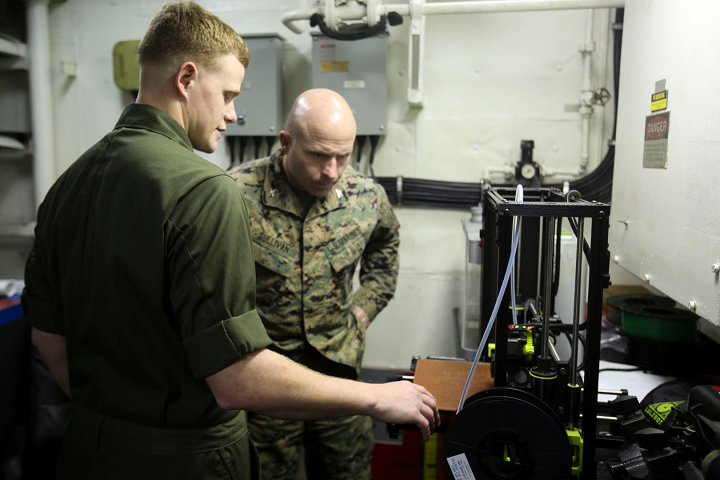
Swiss Guard.
Source: all3dp.com
The Swiss Guard is the personal guard of the Pope. From time immemorial, their form was made of metal, but now they have decided to keep up with the times. A 3D printed helmet will be significantly cheaper and, more importantly, lighter. nine0003
3D printed helmet prototype.
Source: all3dp.com
Helmets are made of PVC, they bear the coat of arms of Pope Julius II, who founded the Swiss Guard in 1506.
The US military turned to the creators of the Iron Man suit, a movie character, for help in creating uniforms for the soldier of the future. The military commissioned Legacy Effects to develop and print the prototype components for the TALOS Special Outfit Kit. nine0003
TALOS will contain a cooling system to maintain a comfortable temperature in the suit, a tactical display and an integrated exoskeleton.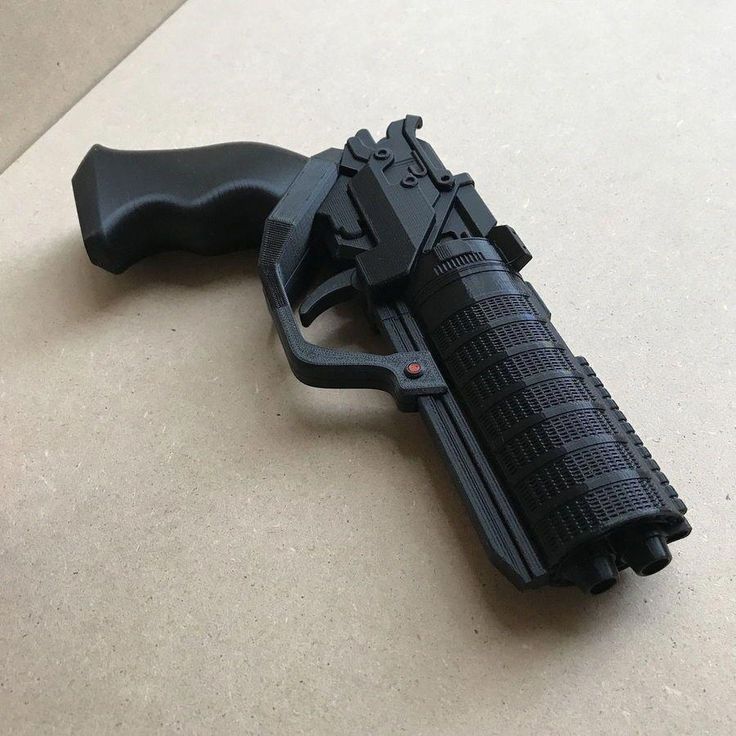
Uniform concept of the future.
Source: 3dprintingindustry.com
The studio team will join the large team already working on the project, which includes bioengineers, combat veterans and technologists.
Construction
The US Army Research Engineering Team printed a large building in just 21 hours. The area of the building is 47.5 square meters. The barrack-style building is the result of a three-year US Army Construction Engineering Research (ACES) program with a laboratory in Champagne, Illinois. nine0003
3D printed barracks.
Source: all3dp.com
Such a short time spent on the construction of the building means that such temporary structures will become more affordable with the development of 3D printing. These buildings can be used as housing for refugees or temporary housing in case of natural disasters.
Construction 3D printer in progress.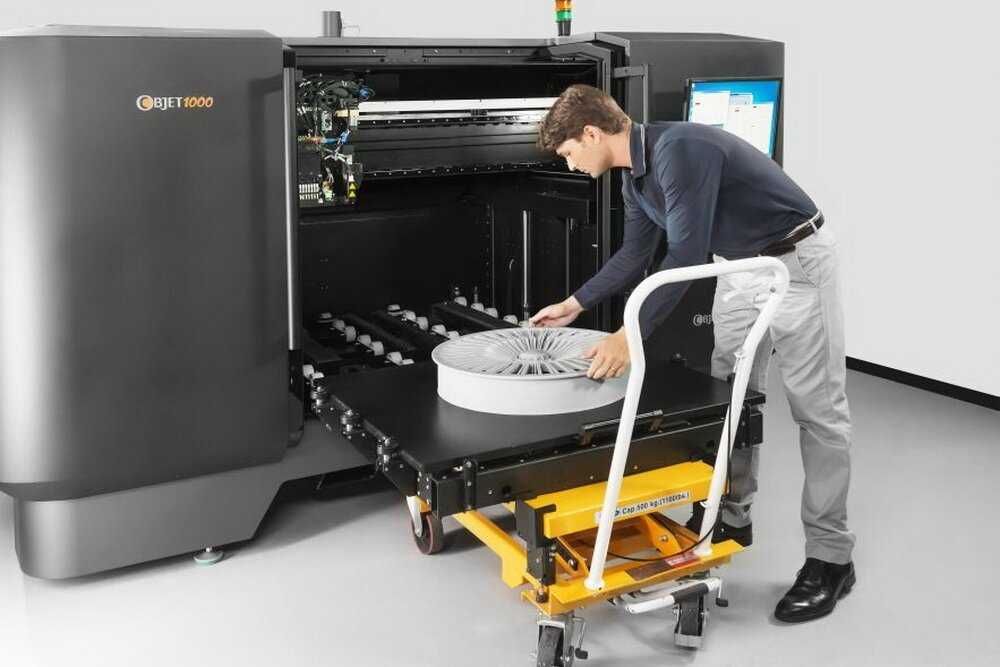
Source: all3dp.com
The building looks like an ordinary house, but in the future such buildings can be given any look. Such buildings are also more energy efficient than traditional ones - they require less energy for heating and cooling. nine0003
ACES cuts building materials in half and allows printing with local materials. Reducing the need for labor is 62%, compared with the construction of plywood structures.
Concrete placement with a 3D construction printer.
Source: all3dp.com
Self-Sustaining
Collaboration between the US Army Research Laboratory and the Marine Corps has led to the development of PET filament technology, for 3D printing, from plastic waste such as bottles from under water. nine0003
According to the military, water bottles and plastic packaging are the most common litter on the battlefield. Both US and allied forces produce large amounts of this waste, and the ability to recycle it will reduce the cost of transporting raw materials. The filament obtained from recycled materials, provided that it is properly cleaned and dried, is completely equivalent in tensile strength to its analogue from primary raw materials.
The filament obtained from recycled materials, provided that it is properly cleaned and dried, is completely equivalent in tensile strength to its analogue from primary raw materials.
Source: all3dp.com
A plant is being developed, housed in a standard shipping container, that will allow the production of filament from waste. nine0003
The US Army is also developing food printers. Their advantages are obvious: the possibility of reducing the cost of food, compared with the traditional delivery of rations from abroad; the possibility of compiling an individual menu, in accordance with the preferences of each soldier; the possibility of individual balancing of the diet, depending on the dietary needs of each soldier.
The printer, like classic 3D printers, stacks components in layers.
3D printed food. nine0044
Source: all3dp.com
The printer uses the ultrasonic agglomeration method to 3D print small snacks.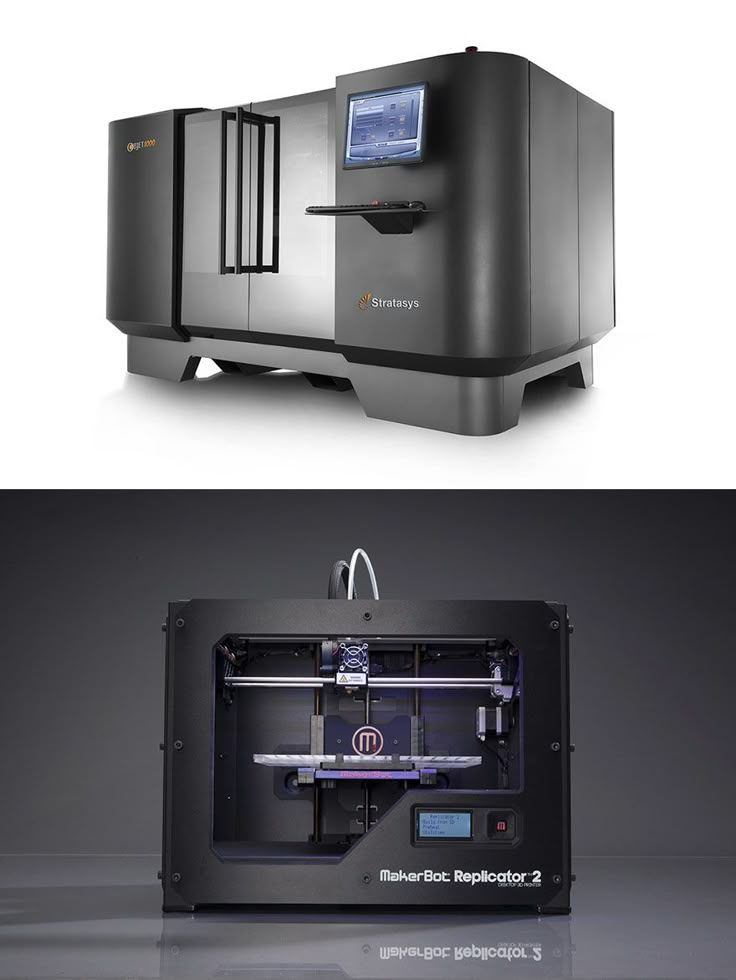
Electronics
University of Massachusetts Lowell researchers have developed a new way to 3D print conductive components for radar systems. They have created a new type of ink that allows radars to be made using 3D printing.
3D printed electronic components. nine0044
Source: all3dp.com
The development was sponsored by Raytheon, one of the defense industry companies.
According to the developers: “The use of this technology makes it possible to obtain cheaper and more versatile systems than those obtained by classical methods. This technology has obvious advantages in the military sphere, but it can also be used in civilian industry, for example, in the production of weather stations or unmanned vehicles. The main problem was obtaining ink with desired properties, capable of working with high-frequency radiation.” nine0003
Applying ink to a plastic plate.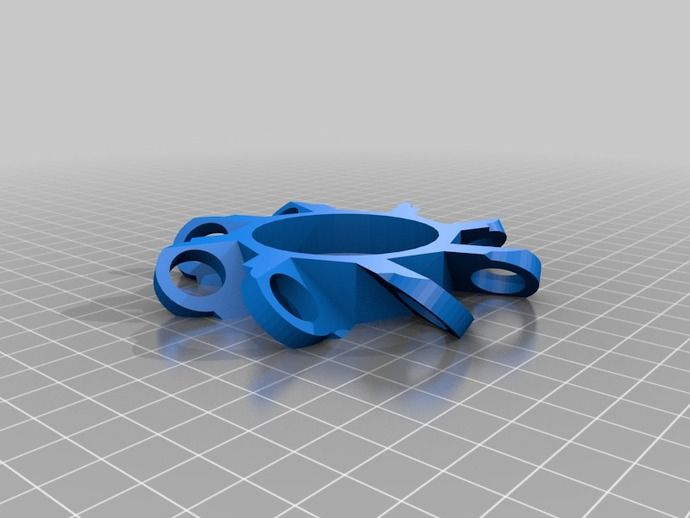
Source: all3dp.com
Two heads with different operating principles are installed on the 3D printer. One applies the ink by spraying, the second fixes them by microvibration. Radar system components such as a voltage controlled capacitor (varicap), phase shifter (for electronic control of phase array radar systems) and frequency filters can be manufactured using this technology. nine0003
The ink material is based on nanoparticles that can be injected into molten plastic and then solidify with it, creating conductive structures.
The US Air Force Research Laboratory teamed up with American Semiconductor to create a silicon-polymer memory chip.
Using 3D printing technology, they have developed a new ultra-flexible chip with built-in sensors.
Dan Berrigan holding the new flexible chip.
Source: all3dp.com
According to American Semiconductor, the silicon wafer is 2000 angstroms thick.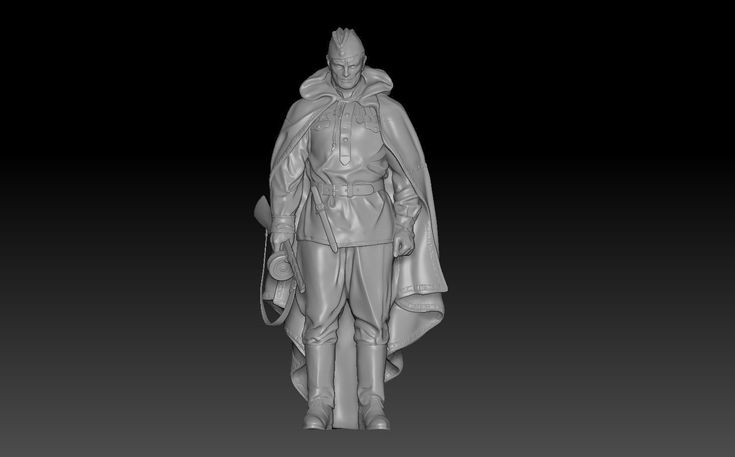 This tiny chip can measure humidity levels, temperature, muscle fatigue, and so on. This makes it ideal for use in new technologies for monitoring the well-being of wounded soldiers or the elderly.
This tiny chip can measure humidity levels, temperature, muscle fatigue, and so on. This makes it ideal for use in new technologies for monitoring the well-being of wounded soldiers or the elderly.
Flexible electronics technology is being developed not only by research laboratories, but also by industry giants.
Apple, Boeing and the Massachusetts Institute of Technology formed an alliance to collaborate with the US Department of Defense in the field of flexible electronics. The goal of the alliance is to have high quality flexible electronics by 2020.
The Department of Defense plans to provide a consortium called the FlexTech Alliance with $75 million over 5 years and raise $96 million in additional funding.
Smart clothes.
Source: all3dp.com
The consortium includes 96 companies, 11 specialized laboratories, 42 universities and 14 state and regional organizations. The key partners of the consortium are Apple, Boeing, General Electric, General Motors, Lockheed Martin, Motorola Mobility, Qualcomm and many others.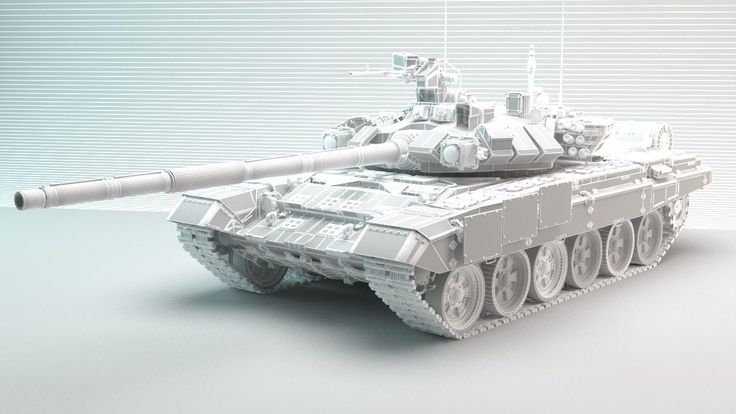 Partner universities include Cornell, Harvard, Stanford, New York University and the Massachusetts Institute of Technology.
Partner universities include Cornell, Harvard, Stanford, New York University and the Massachusetts Institute of Technology.
The practical application will be primarily focused on military targets such as uniforms with vital sign monitors. Pressure sensors can also be installed on vehicles to monitor deformation in key areas. nine0003
The civilian application of such microcircuits will help athletes control body function and improve performance, and people suffering from cardiovascular disease, control and prevent seizures. This technology will allow hospitals to monitor their patients en masse.
Prospects
British scientists and engineers are working on growing military drones using chemical technology.
Hydroponic Chemputer. nine0044
Source: all3dp.com
Military developers explore all possible and impossible technologies. In this case, they are working on a "chemcomputer". “Chemputer” is a registered trademark of BAE Systems.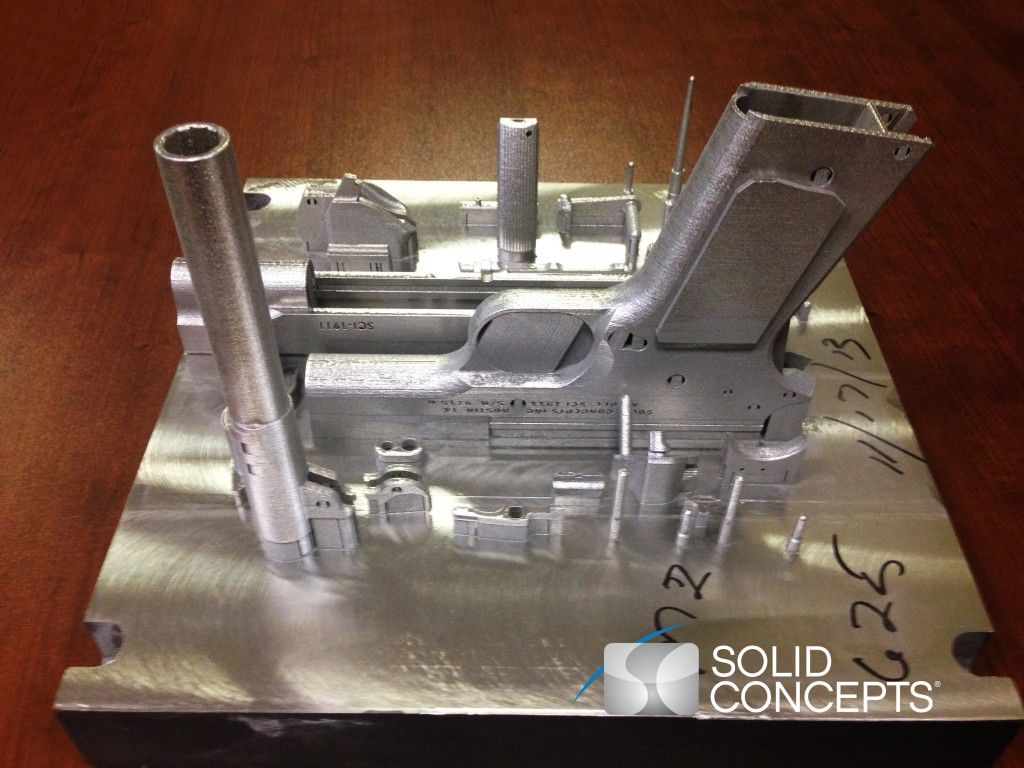 The technology is being developed by Professor Lee Cronin of the University of Glasgow and is a 3D printing of biomaterial drones and aircraft.
The technology is being developed by Professor Lee Cronin of the University of Glasgow and is a 3D printing of biomaterial drones and aircraft.
Unlike classic 3D printers, a chemputer carries out chemical reactions at the molecular level, creating everything from electronics to wings. nine0003
Drone prototypes.
Source: all3dp.com
While British scientists are inventing new printing technologies for the military, simple makers are creating weapons of the future using conventional 3D printers.
So, David Wirth created a hand railgun in his workshop.
David Wirth with his railgun.
Source: all3dp.com
Possibly inspired by the computer game Quake, he created this weapon using CAD, a 3D printer and an Arduino platform. The railgun can use aluminum or graphite bullets as ammunition, firing them at a speed of 250 m/s. The design is based on six huge capacitors, which, with a total weight of about nine kilograms, store more than 1800 joules of energy for each shot.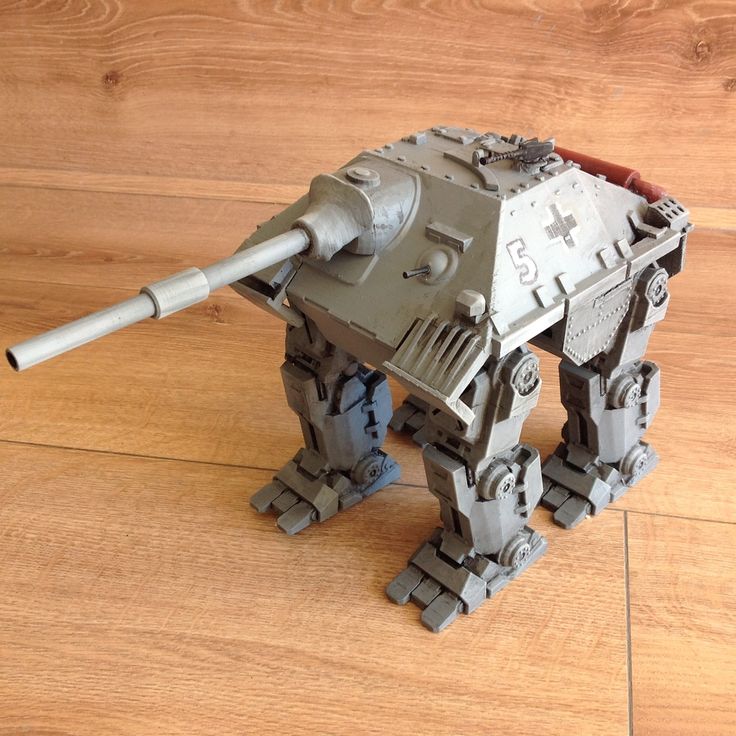 The railgun also consists of batteries, two parallel contact rails and a pneumatic ammunition supply system. nine0003
The railgun also consists of batteries, two parallel contact rails and a pneumatic ammunition supply system. nine0003
Schematic diagram of a railgun.
Source: all3dp.com
Tests have shown that the railgun is inferior to a conventional pistol in terms of shot energy, but can penetrate a centimeter sheet of plywood. For comparison: stationary military railguns accelerate the projectile to a speed of 13,000 miles per hour in 0.2 seconds, the speed of a projectile from the Wirth apparatus is 560 miles per hour.
Conclusion
3D printing technology is increasingly used in the military. The main role in its promotion is played by the need to reduce costs. On-site 3D printing of parts helps to solve the problems of logistics and supply, allowing you to save time and money on delivery, which is important for the army and aviation, and even more so for the navy - it is impossible to foresee ashore and take with you everything that you might need, and delivery boarding at sea is expensive.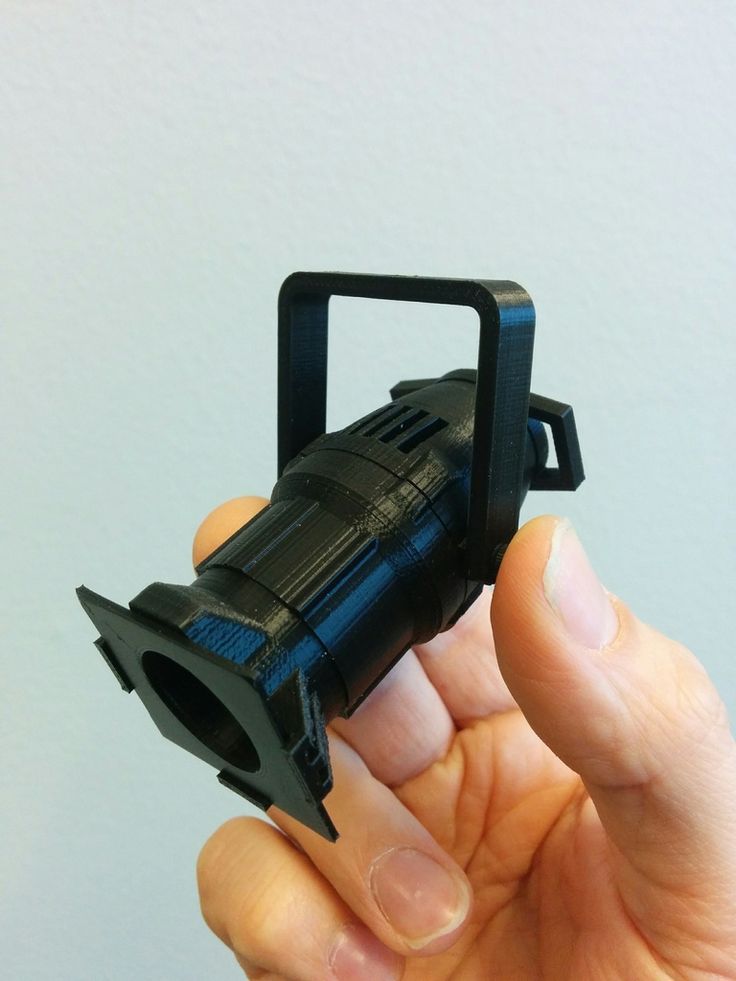 nine0003
nine0003
We have cited as examples only a small part of cases on the stated topic - it is impossible to describe in one article all the prospects for the use of 3D printing in the military industry. And most of the solutions used by the military in production are also relevant for the civilian sector.
You can buy a 3D printer for production in Top 3D Shop — our experts will help you choose the best equipment for solving any tasks.
Want more exciting news from the world of 3D technology? nine0003
Follow us on social media networks:
Vk
Youtube
Top 3D Shop - Your expert in the 3D technology market
New generation - Mobile military field car repair shops with 3D printers. Military acceptance
New generation - Mobile military field auto repair shops with 3D printers. Military acceptanceINITIAL MILITARY TRAINING
April 21-22, 2023, Moscow
New defense industry technologies in fighting forest fires
October 17-19, 2023, Moscow
Equipment
April 21 - 22, 2023, Russia, Moscow
INTERPOLITEX: "ANTI-TERROR - INTEGRATED APPROACH "
Military acceptance. Military field car service. New generation.
Zvezda Live 6.0
Tags: Military acceptance, Military field car repair shop, New generation, 3D printer
Blogs
Ilya Kramnik
Military expert named the goal of creating a new military group in the north-west of Russia
Military expert Kramnik said that he could influence the speed of creating a group of troops in northwestern Russia
Alexander Khramchikhin
Until the complete "Stupor"
Drone attack and how to deal with it
Sergey Marichev
We invite you to the online meetup of the Tech Explorer project
Online meetup of the Tech Explorer project on the topic: “Entering foreign markets and attracting investments for Russian startups.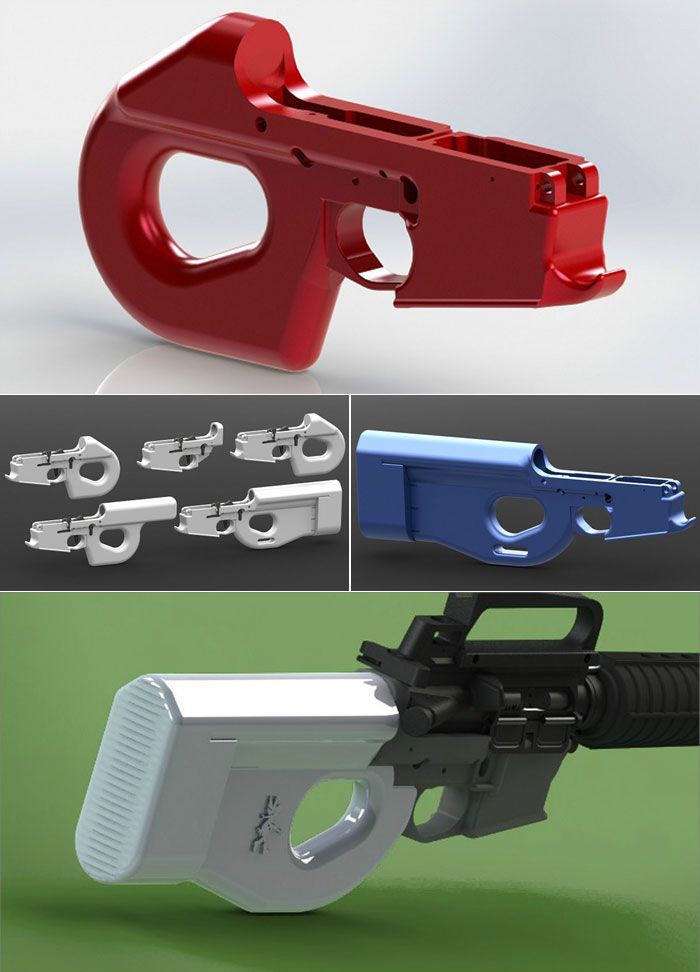 ..
..
Victor Litovkin
NATO is a US tool to enslave Europe
Russian expert named the main purpose of NATO
Video of the day
nine0004 Military acceptance. "NUCLEAR POWER STATION. View from inside»Photo essay
Equipment Exhibition at VDNKh
Interview
Artem Sokolov: jewelry is the first thing that comes to mind when thinking about a gift
Politics and society
Valery Matrokhin: we need to increase the capacity of railways in the East
Vladimir Milovidov: not alone, but ourselves
Mikhail Degtyarev: we overcome difficulties thanks to the diligence of our people
Alexander Bastrykin: sooner or later every corrupt official will answer before the law
All materials
Equipment and weapons
The Roscosmos enterprise tested the engine for the new Soyuz-5 rocket
Military meteorologists of the Central Military District received about 10 units of new equipment
The commander of long-range aviation announced that all crews of the regiment had mastered the Kinzhal complex
Corvette "Mercury" hit a target in the Baltic Sea during state tests
All materials
Power structures
Military personnel of the Eastern Military District in Buryatia are improving the skills of combat use of hand-held anti-tank grenade launchers
In Transbaikalia, recruits of the motorized rifle unit of the Eastern Military District began training on modern computer simulators
In Primorsky Krai, mobilized military personnel of the Eastern Military District are firing from PKM-97 machine guns and grenade launchers0003
"Iskanders" of the Baltic Fleet conducted exercises on delivering strikes in case of radiation and chemical contamination
All materials
Cooperation
Ferry service on the line "Ust-Luga - Kaliningrad" was awarded a business award
RT-Tekhpriemka told Elektrosignal specialists how to identify counterfeit goods
LADA became the official car of the Baikal Mile
RT- Technical acceptance” and “KAMAZ” exchanged experience on production automation and quality control
All materials
Science and production
Ruselectronics increased the production of engines for drones, the oil industry and housing and communal services by 50%
SNSZ signed a contract for the construction of four Sommers passenger catamarans
Artem Sokolov: jewelry is the first thing that comes to mind when thinking about a gift
The KumAPP plant in Bashkiria will launch production of the BAS-200 drone from 2023
All materials
Diversification of defense industry enterprises
Kalashnikov Concern presents new types of hunting rifles
Ruselectronics demonstrated a new model of sowing equipment
Kalashnikov increased machine tool production by 36%
Kalashnikov developed a new hybrid machine 9003 All
Exhibitions and conferences
We invite you to take part in the II Specialized exhibition "Equipment"
Specialized exhibition "Equipment"
Welcome to the exhibition "Equipment"
Exhibition "Equipment" - professionally about the actual!
All materials
Security
Novikombank issued rings for contactless payment
Ruselectronics equipped fuel and energy facilities with a new system of protection against drones
Antiterrorist measures are being strengthened in St.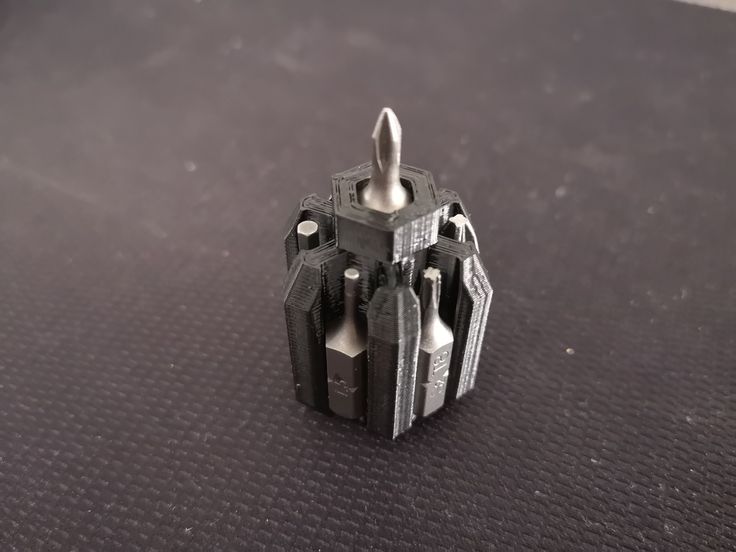 0003
0003
All materials
Civil aviation
Flight tests of the PD-8 engine as part of the Il-76 flying laboratory have begun
An-2 of the Saratov Aeroclub has been upgraded to the TVS-2MS version
Rostec will transfer helicopters to the Ministry of Emergency Situations for work in the Arctic
Rostec has transferred another batch of " Ansatov" for medical aviation
All materials
Cosmos
Russia provides the BRICS countries with Earth remote sensing data
On the cutting edge: RCS technologies protect the population and industrial facilities of Yakutia from natural disasters
Pixel.AI update opens up new opportunities for users
Evgeniy Nesterov: we are developing five satellite constellations for Sphere
All materials
Weapons of the world
Israel and the United States practiced the "campaign against a distant country" in military exercises
The Russian-Laotian military exercise "Laros-2022" began
Iran has developed the first hypersonic ballistic missile
Turkey tested its own ballistic missile over the Black Sea
All materials
History
The memory of the gunsmith Gennady Denezhkin was immortalized in Tula
"Ammunitionman's Day" will appear with the support of TsNIITOCHMASH
Historians presented the book "Rzhev 1942. The first summer success" and the film of the same name in the Rzhev region at the Victory Museum
The first summer success" and the film of the same name in the Rzhev region at the Victory Museum
Expedition opened in the Tver region. Kalinin Front"
All materials
Security Exhibitions
II Specialized Exhibition "Equipment"
Specialized Exhibition "INITIAL MILITARY TRAINING"
Specialized Exhibition "Military Field Surgery"
XXVII International Exhibition of State Security Means "INTERPOLITEX" 93 International Forum 9003 - 2023 digital transformation of state security "CIFROTECH"
IV scientific-practical conference "New technologies of the military-industrial complex in extinguishing forest fires"
Government agencies State companies Organizations SMI
Ministry of Internal Affairs of Russia
Federal Security Service of Russia
Ministry of Emergency Situations of Russia
FSMTC of Russia
Ministry of Defense of Russia
Federal State Unitary Enterprise Rosoboronexport
Golitsynsky Border Institute
Rostekhnology
FCU NPO "STIS" of the Ministry of Internal Affairs of Russia
Union of machine -builders
OVK BISON LLC
FSBI "Sexicist"
RIA Novosti
Guardian, journal
National Aviation Journal "Wings of the Motherland"
TK "Oruzhie"
Magazine "New defense order. Strategies"
Strategies"
IA "Rosinformburo"
Nezavisimaya gazeta
Journal RUBEZH
ITAR-TASS
Internet security portal SECANDSAFE.RU
"On Guard of the Motherland.ru". The truth about the war!
Transiver.ru
LLC Publishing House Safety of Labor and Life
Armed
Ohrana.ru
Specialized journal Safety
Mir and Safety magazine
Haging Point "Point" Point "
Analytical publication "Adviser to the President"
"Science and Technology" - a magazine for young people
Publishing house "Bedretdinov and KO"
Military-industrial courier
missile equipment
Arsenal Fatherland magazine
News portal History News
Private Guard Journal
Public Organization "Safe Fatherland"
Internet Internet.